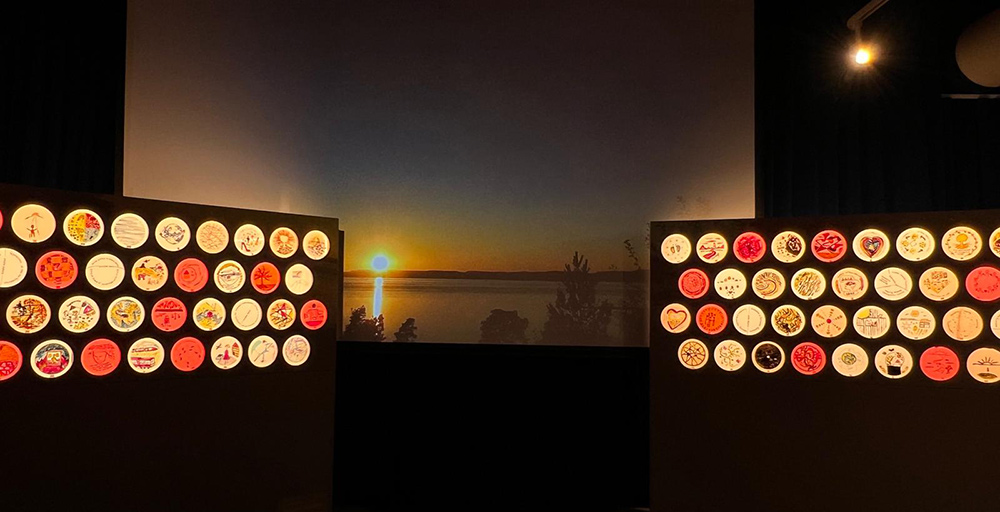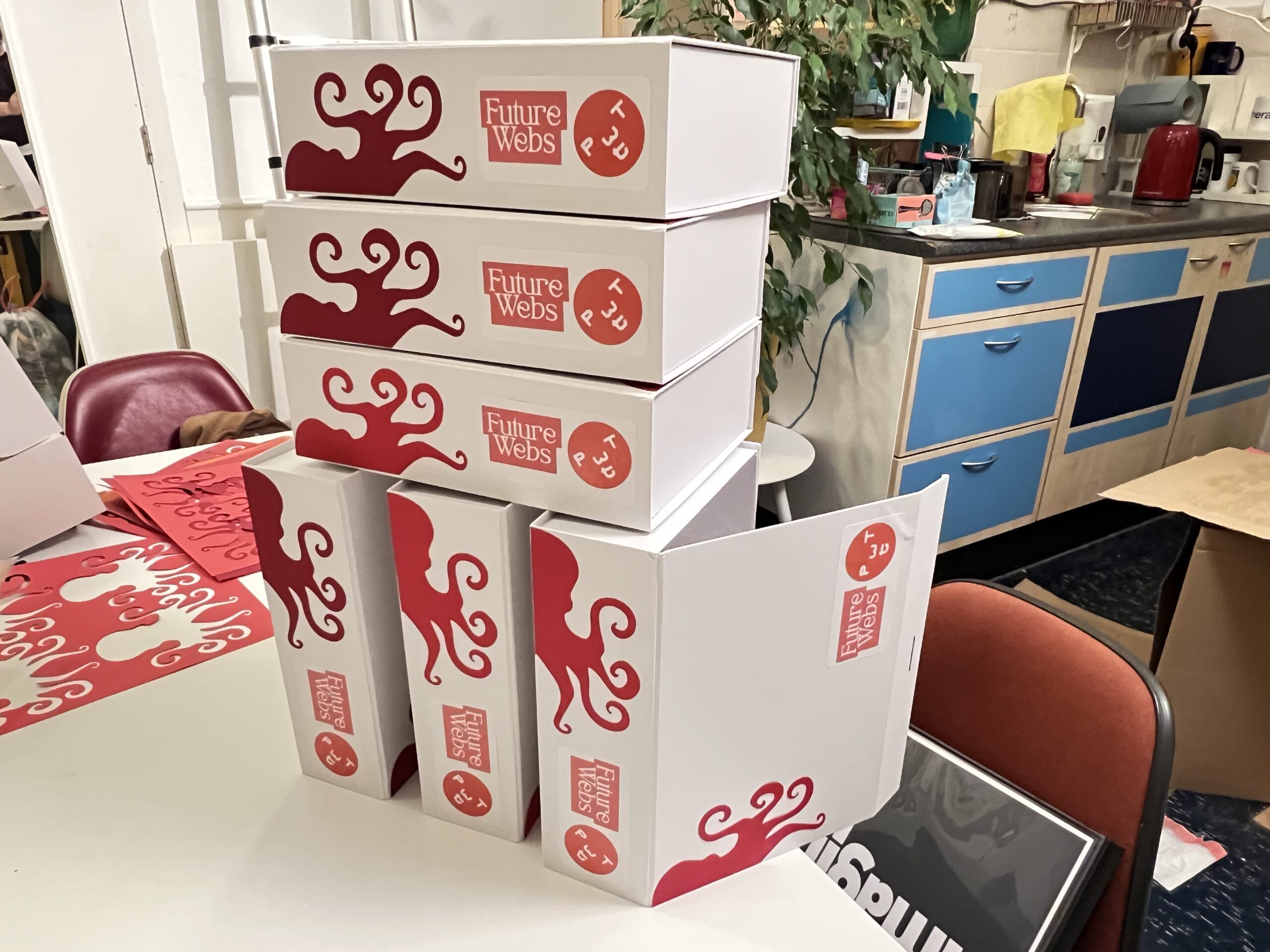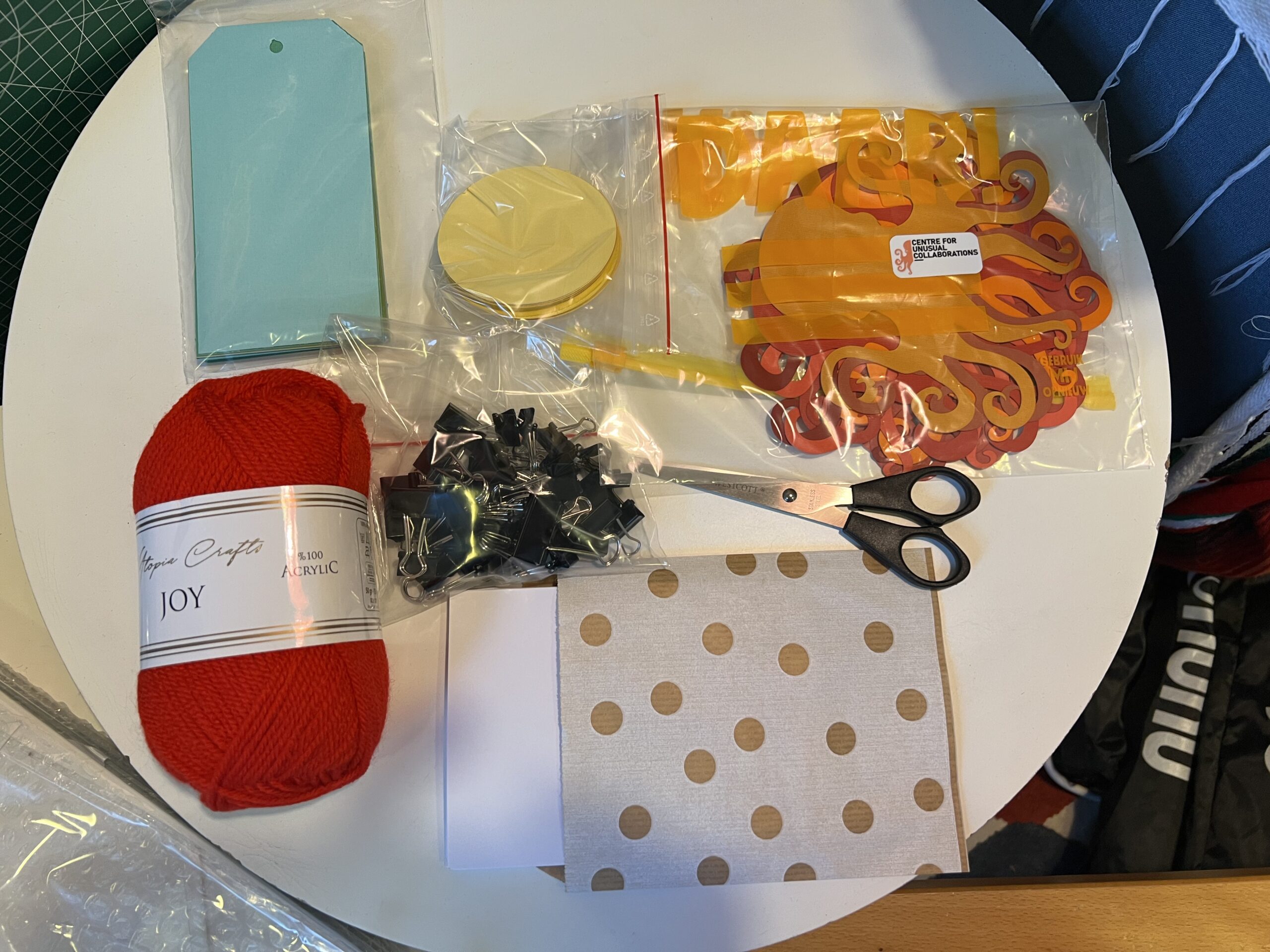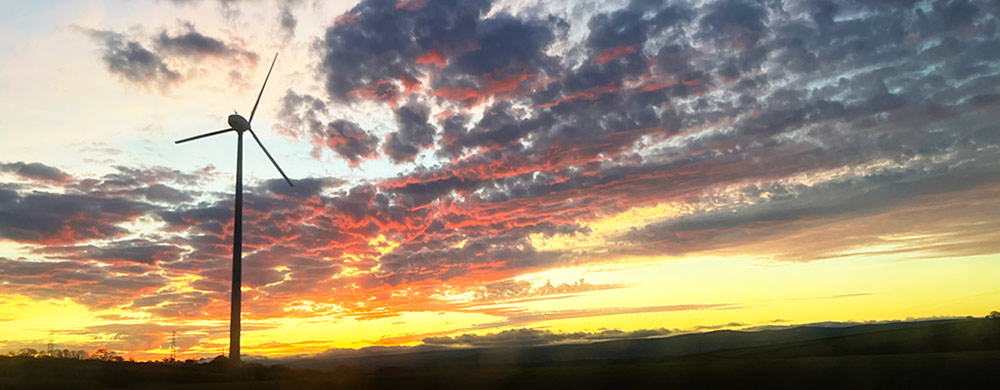This blog is now in its 20th year* and it’s been in the wilderness for a bit. I feel as though for the last few years, I’ve mainly used blogging, and the newsletter version of it, to recite lists of “things I have done”/”events I have organised or am currently organising”. This is what, so often, the academic system seems to want: continuous justification of one’s right to exist via proof of “outputs”. I have done much less exploration of ideas via the blog or newsletter, or offered pointers towards interesting things and people, than I used to, or blogged about work in progress (because that’s not an “output”). There haven’t even been any of the longer—2,000, 8,000, even 10,000 word posts that I sometimes did, to work out thoughts through writing (and readers’ responses). Career dependence on writing endless academic papers (again, because it’s what the system expects) anticipating reviewers’ critique, has also unfortunately had a souring effect on my ability to blog in a fun or exploratory way: every sentence or idea becomes a site which needs to be fully justified, defended against being (mis)interpreted or picked apart, and that worry has a tendency to stop blog posts in their tracks. But I should remember Simon Willison’s simple advice here, not to worry too much about uniqueness (it’s OK to say “I just figured this out: here are my notes, you may find them useful too” as he puts it), but also, “If you do a project, you should write about it. I recommend adding “write about it” to your definition of “done” for anything that you build or create.” Somehow that has slipped, for me, amidst everything. Of course, the growth and then latterly techbrofascist takeover of much social media over these two decades have interacted in different ways with my blogging. Moments of distraction in the long dark evenings (mostly admin-related) of academia suited short Twitter-style interactions very well, until the platform was destroyed, better than longer-form writing.
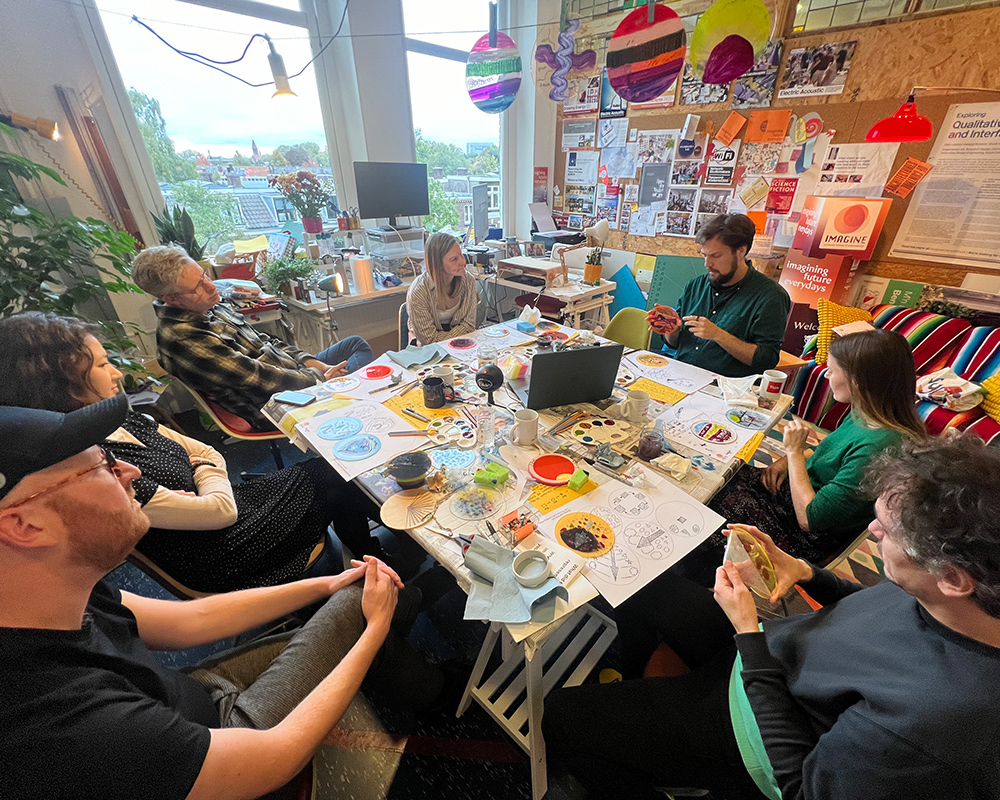
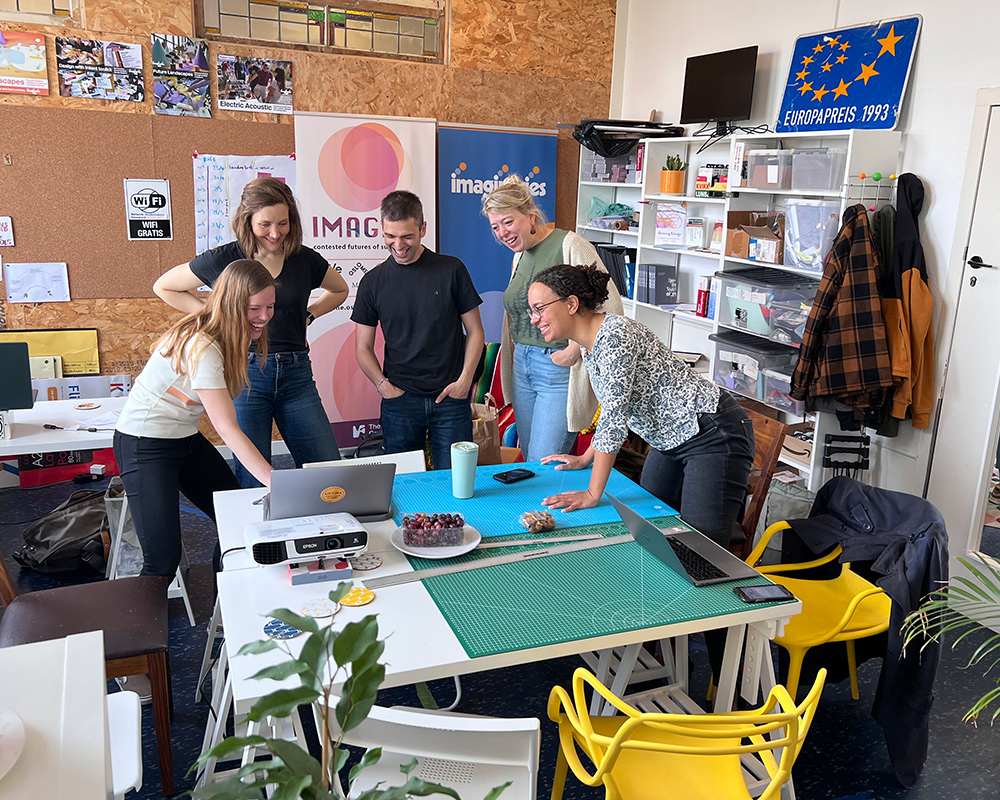
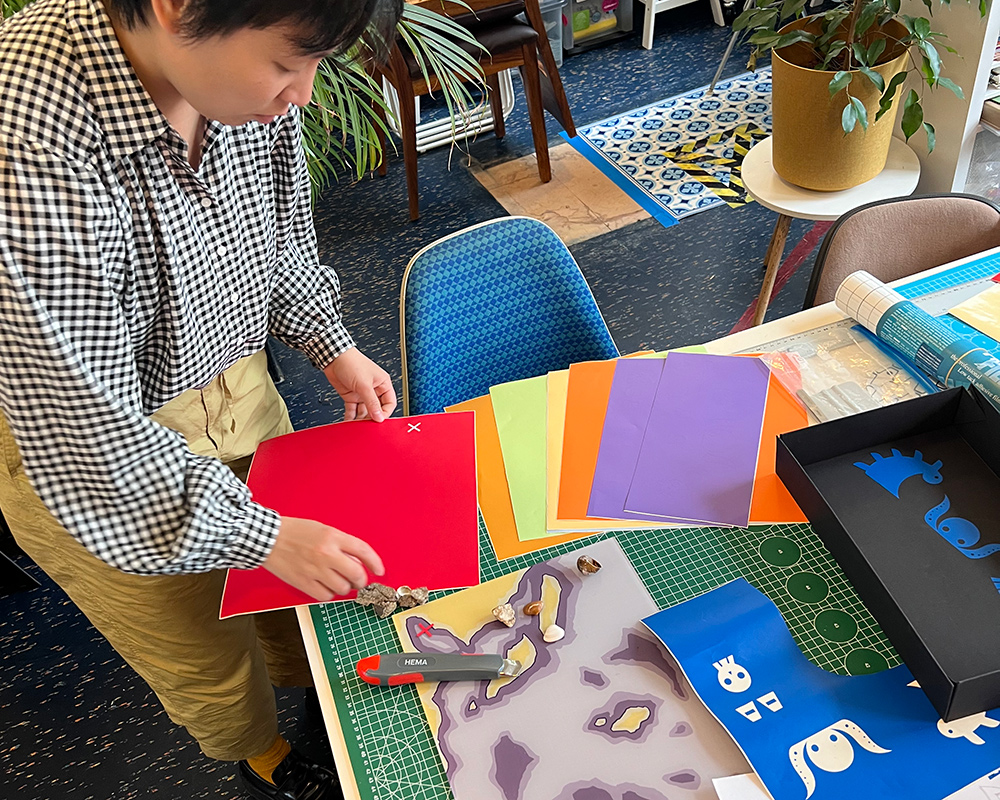
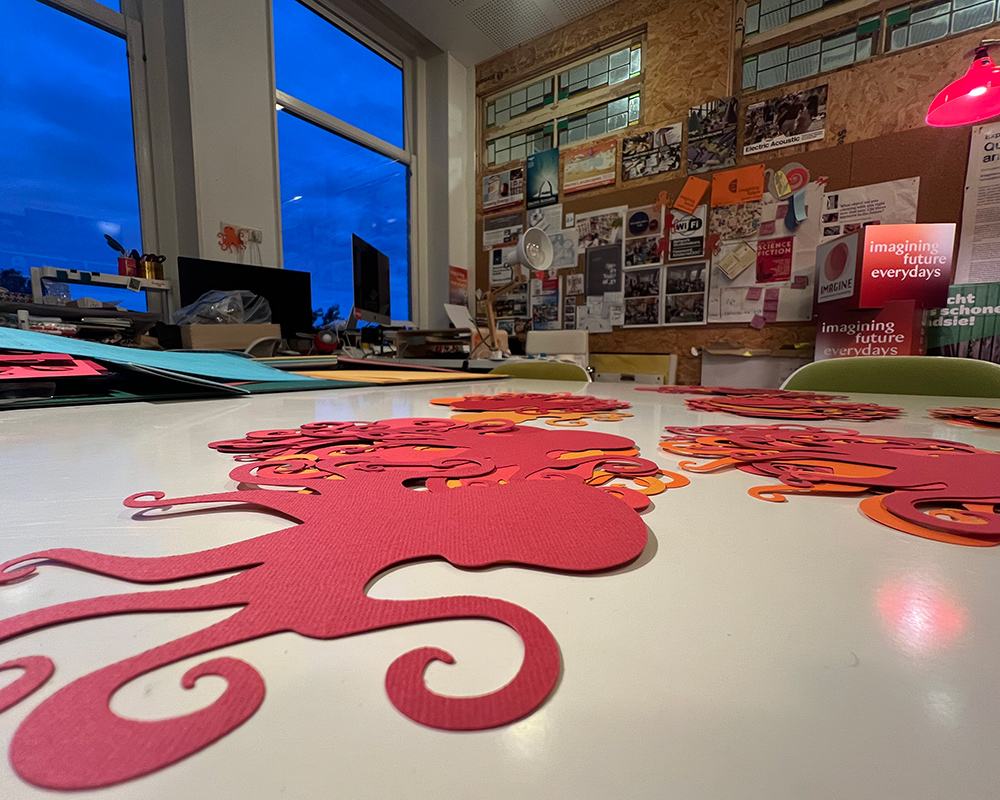
Moments from the studio this year
Anyway: the point is, I think finally I’m on the verge of being able to write more effectively again. In 2024 I was lucky to be in a position to do a number of things I’d been hoping to be able to for a long time, including putting together a physical studio space for the Imaginaries Lab in Utrecht (another time: I will write about what I think I’ve learned about the kind of space which is conducive to creative research activities)—and also finding a new position at somewhere more closely aligned with my vision and hopes for what universities can be, in an age of climate crisis. In February 2025 I’ll join Norwich University of the Arts, where I will be developing the new Institute for Sustainable Worlds. There are many ways in which a new institute and amazing new colleagues can help invigorate new kinds of ideas and connections and ways of sharing them, and I intend to make this an important part of my approach.
In the meantime though, what happened in 2024?
This year, in teaching and research (which, as I’ve written about before, are often very intertwined in design), I have focused as much as I can on designing tools and methods to help people, together, explore how they imagine, and imagine differently (futures more broadly, but also past imaginaries of futures, futures of everyday life, personal futures, organisational futures, new kinds of collaborations…). This, for me, is an important part of imagination infrastructuring, as introduced by Cassie Robinson and developed further by researchers such as Ruth Potts, Keri Facer, Joost Vervoort, Roy Bendor, and others. It’s maybe a gradual clarification of the Imaginaries Lab‘s mission. I’ve been part of three main funded research projects this year, IMAGINE: Contested Futures of Sustainability (led by Oslo Metropolitan University, funded by the Research Council of Norway), Playing With The Trouble: A Travelling Library for Transformative Play, and [UN]BOX: Unpacking, Cocreating, and Materialising Collaborative Research Processes for Shared Learning, Purpose and Impact (both funded by the Centre for Unusual Collaborations). Towards the end of the year I was also part of a successful application for a seed grant from the Institute for a Circular Society around upcycling in Utrecht. As so often, each of these projects really comprises lots of smaller sub-projects and activities. I’ve been lucky to be able to run workshops and give presentations at events including the Anticipation conference in Lancaster, Utopia*Art*Politics in Utrecht, RSD in Oslo,and (online) DRS 2024 in Boston, and collaborated with some really great people all over the world. I’ve been on some great train and ferry journeys! I’m also privileged to have worked with some wonderful students at TU Eindhoven. But of course, all of this is against a world of great injustice and horror: I have been very very lucky this year (I also got engaged, and moved house) but I know many others haven’t. We need new models, in so many areas.
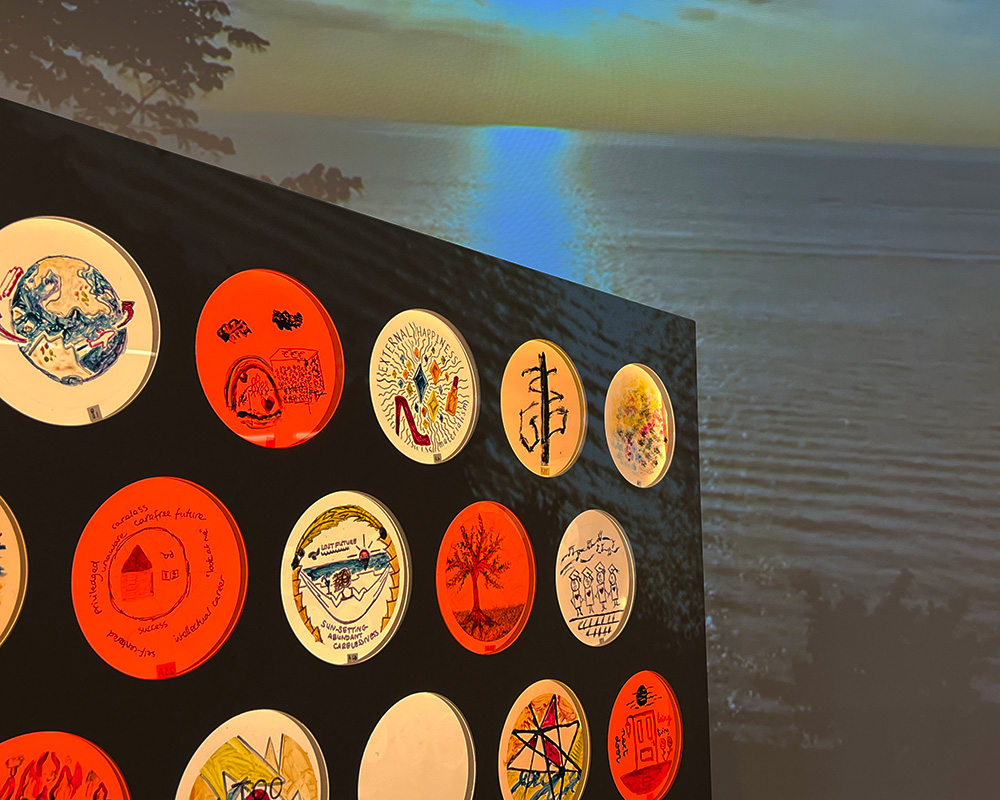
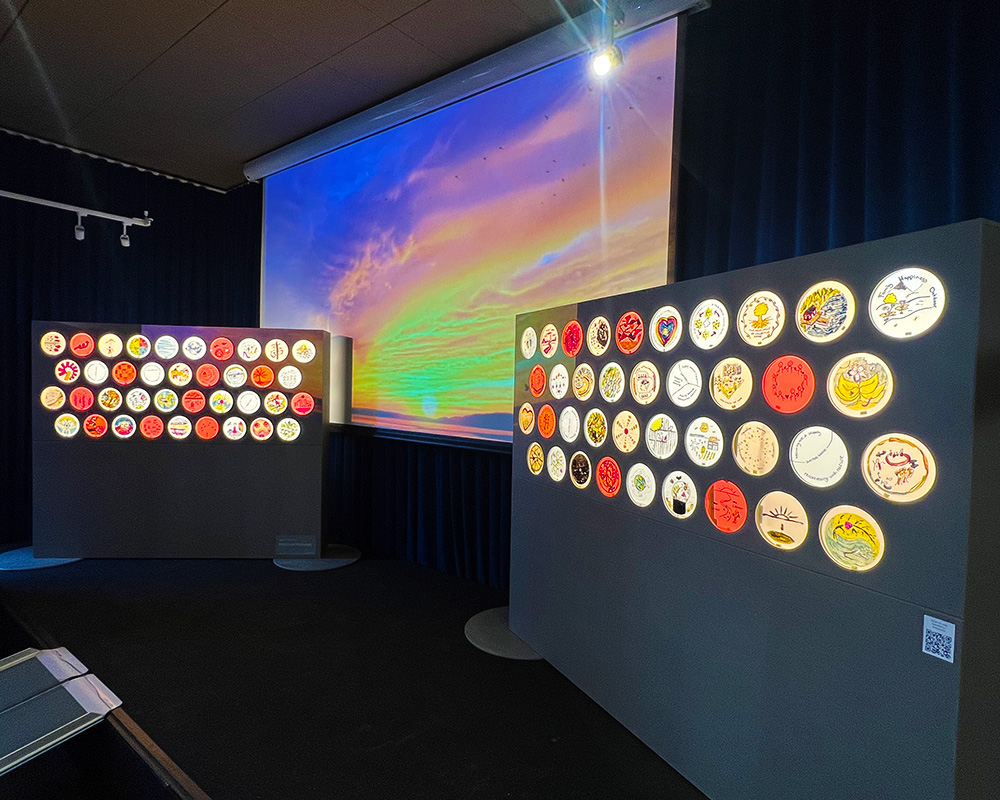
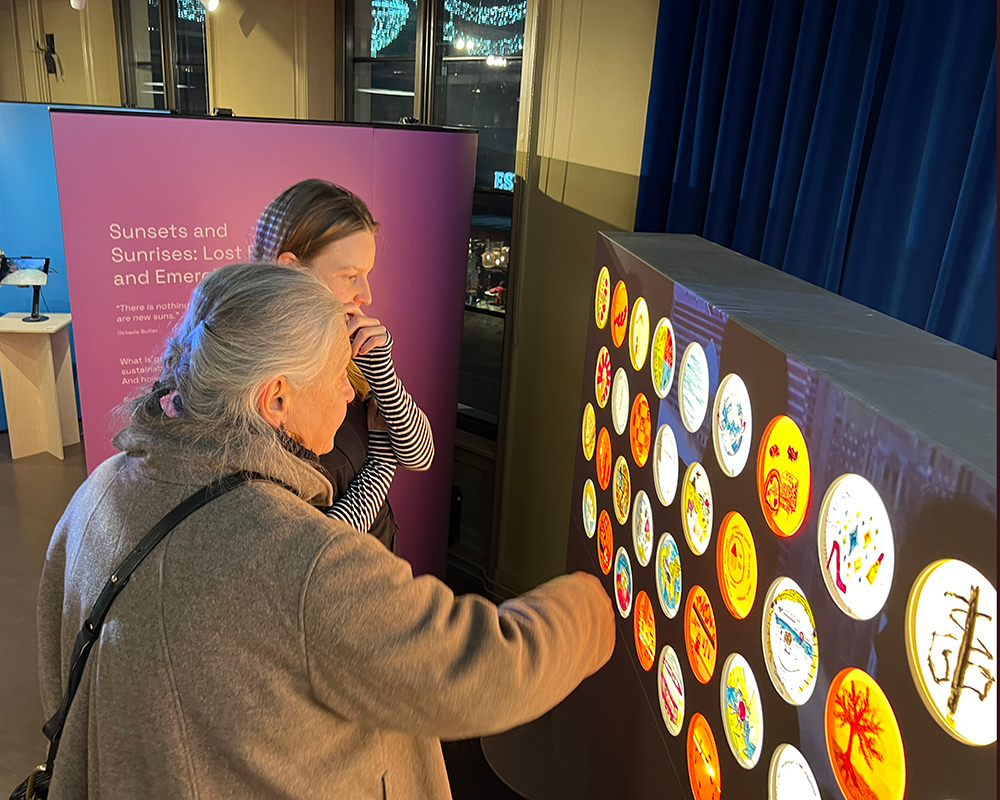
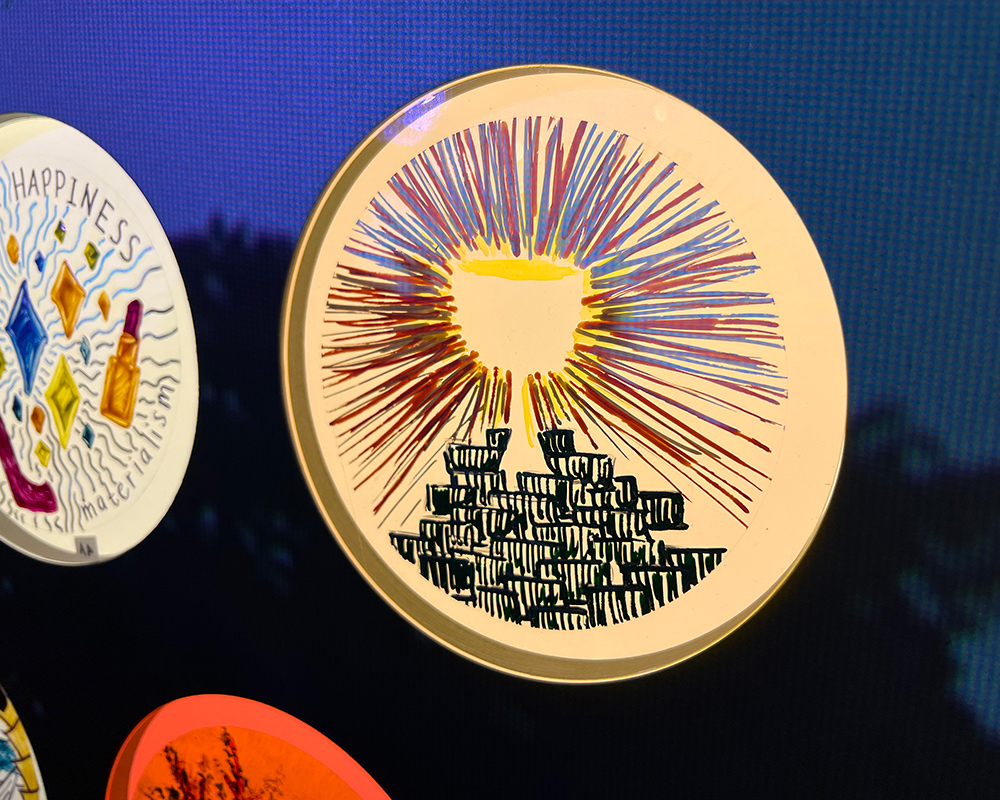
Sunsets & Sunrises on display at Litteraturhuset in Oslo
Sunsets and Sunrises: Lost Futures and Emerging Hopes
“There is nothing new under the sun, but there are new suns.”
Octavia Butler
The most satisfying project this year has been developing Sunsets & Sunrises with my IMAGINE colleague Femke Coops. We’ll share more once we’ve written it up more fully, but in short, it’s both a collaborative art piece and a participatory research probe into people’s imaginaries of futures. Collectively, sharing our lost futures (via our sunsets) creates a collaborative memorial, but also (via our sunrises) a shared witnessing of the emergence of hope for new possibilities.
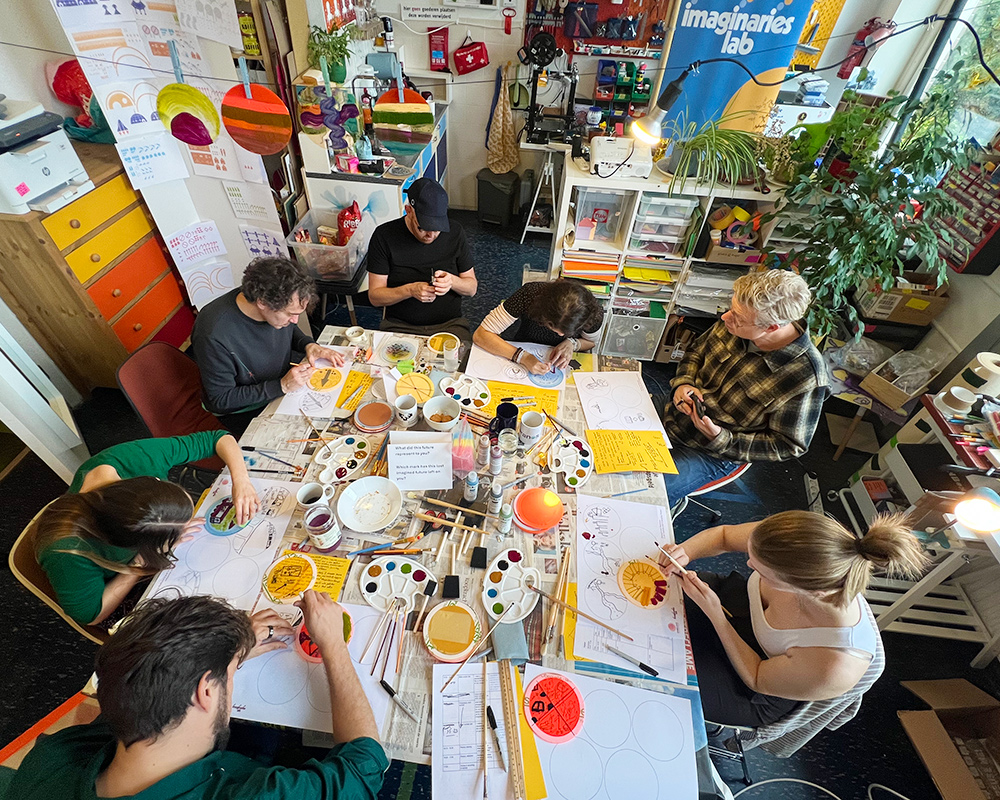
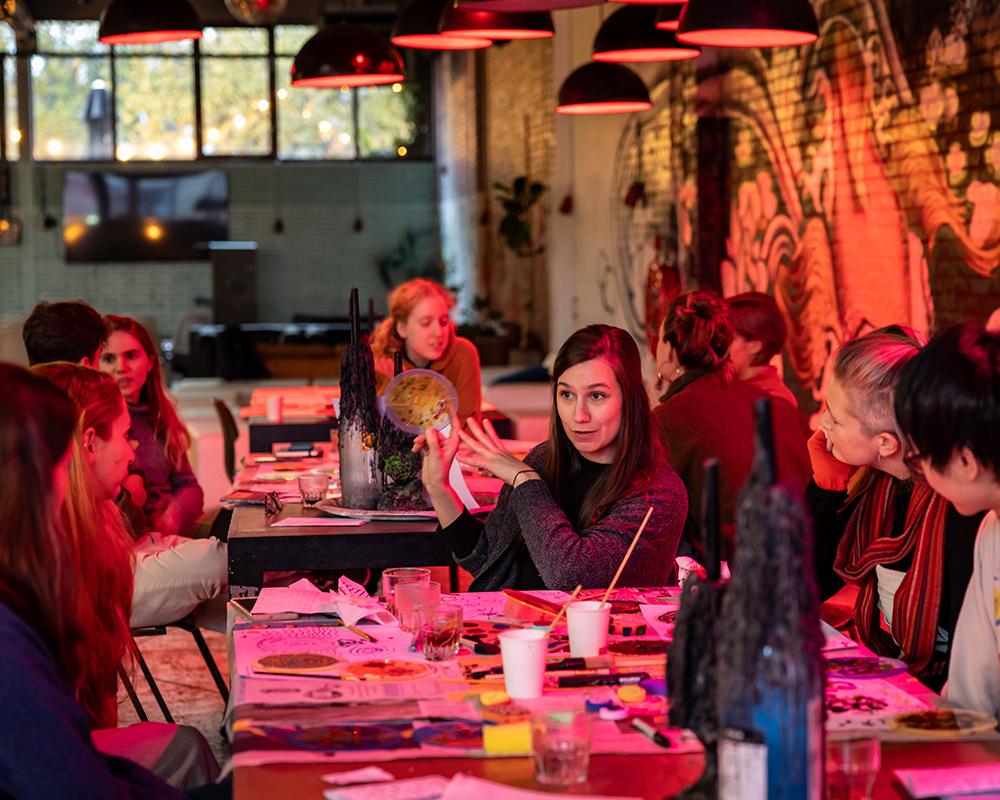
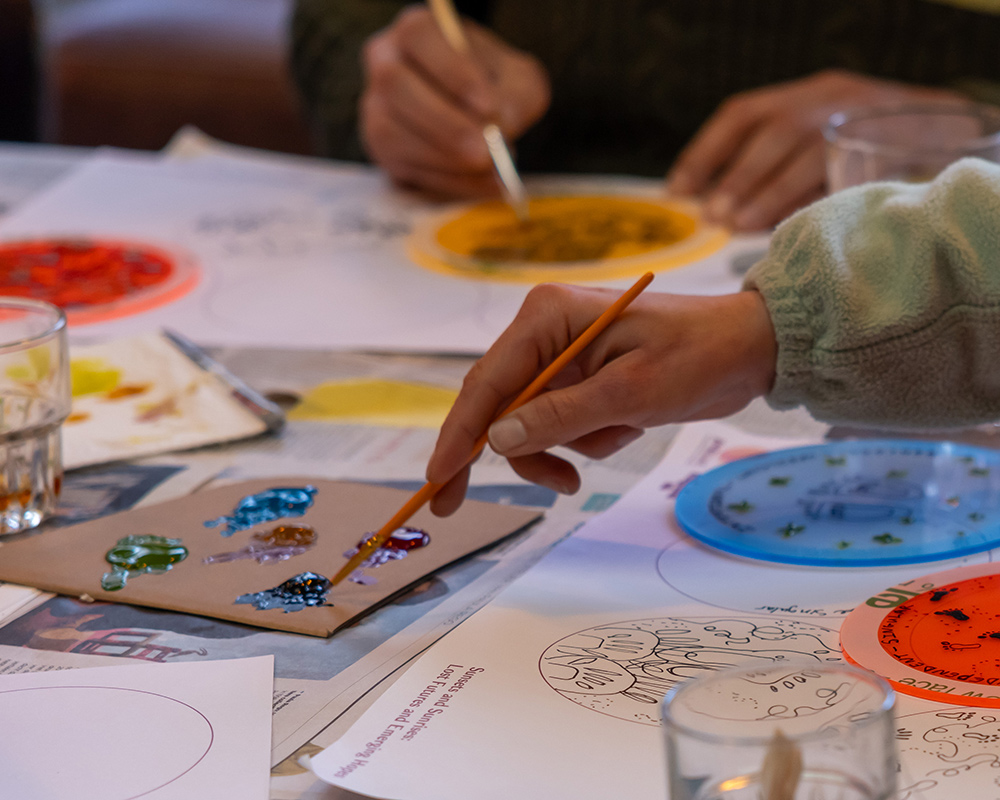
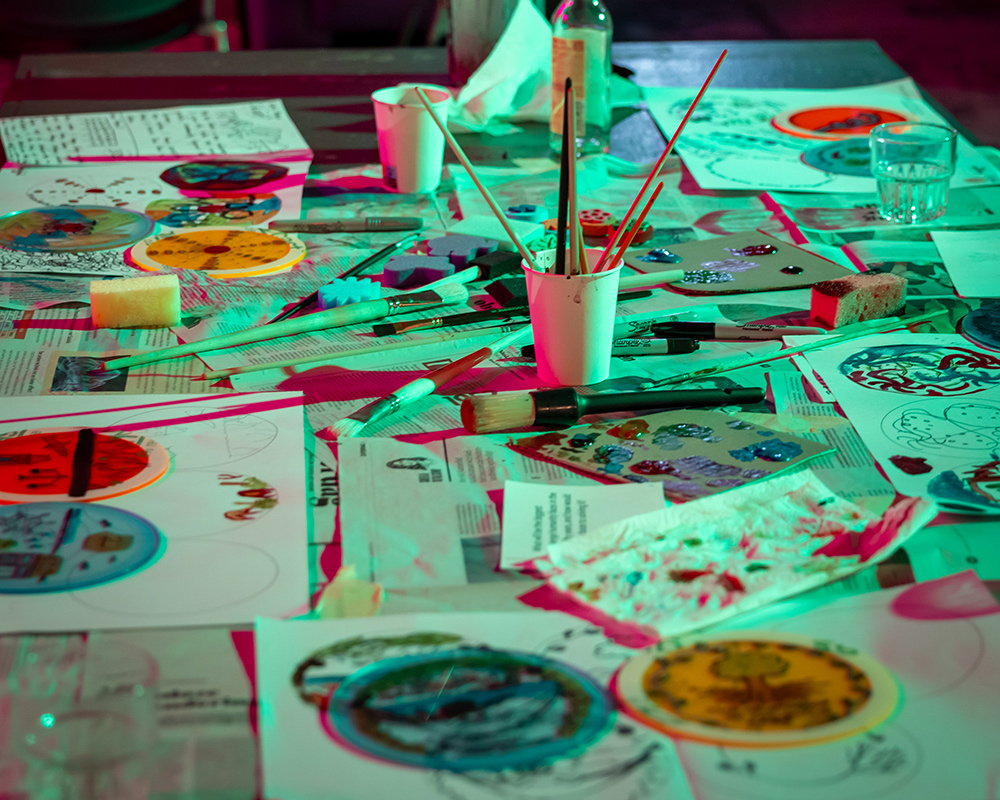
Sunsets & Sunrises workshops, including photos by Paula Angelica
Our starting point is the question of what is going away, in our transitions to more sustainable futures? And how does that feel? The Sunsets and Sunrises activity aims to give us space to engage with our emotions around imagined futures that are disappearing (and appearing), as part of the phase-out and breakdown of systems, structures and practices. We use creative materials to help participants share ideas and emotions of imagined futures that we have perhaps had to let go (‘sunsets’), or which we realise are disappearing, both personally and at a larger scale—whether as part of transitions to a more sustainable society or exactly because of the current state of the world. But we also explore (‘sunrises’) what futures might be on their way, already effective (and affective) in our presents, bringing hope for better worlds and ways to live. The activity builds on Femke’s work (with Caroline Hummels and Kristina Bogner) on designing spaces for letting go in sustainability transitions, and my own work on new metaphors, also taking inspiration from work including Mark Fisher’s writing on nostalgia for lost futures, Candy Chang’s After the End, Vanessa Andreotti’s Hospicing Modernity, and Kristina Lindström, Li Jönsson, Christina Lindqvist, Jonas Larsen and Per-Anders Hillgren’s Grief and Hope in Transition, among others.
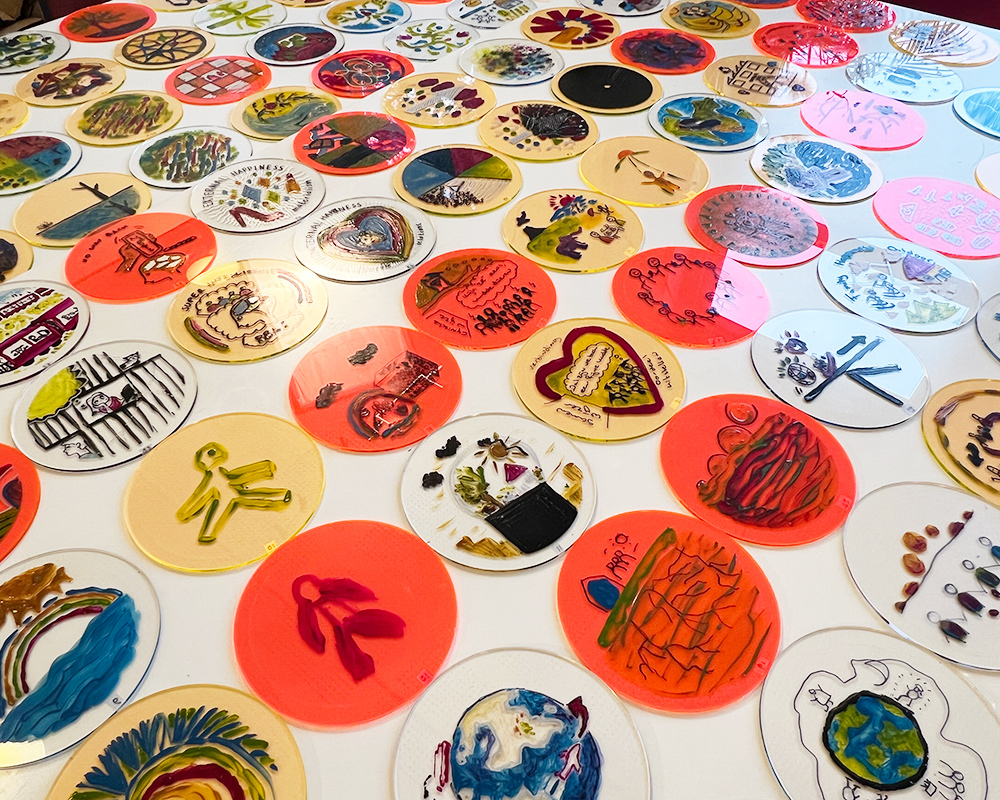
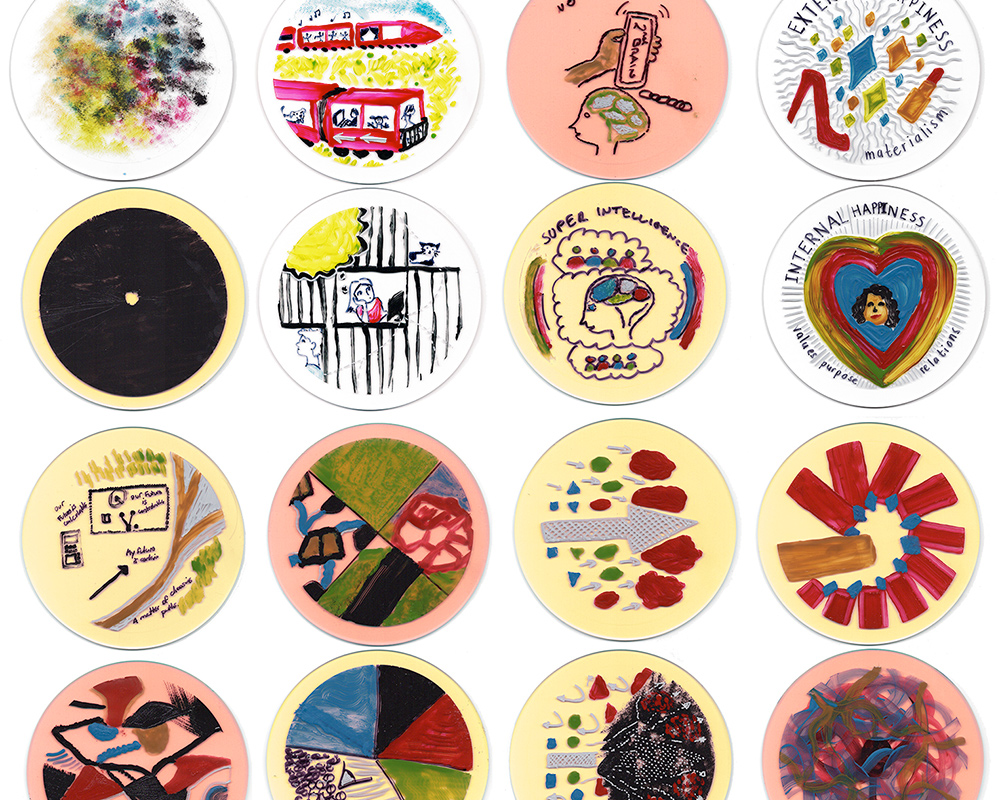
Sunsets & Sunrises discs—a glimpse of the kinds of images participants produced
Through four workshops in the Netherlands (including Staying with / Playing with Pain: The role of emotions in deep transformative change processes, organised by Kristina Bogner and Femke) and in Norway, participants have created approaching 100 sunset and sunrise discs, each hand-drawn or painted to tell a story of a possible future setting or rising. A selection of sunsets and sunrises was exhibited at Litteraturhuset in Oslo from 10–15 December as part of The Futures We Imagine (thanks to Marie Hebrok, Nina Heidenstrøm, James Lowley, Lisbeth Løvbak Berg, Maria Moreno, and everyone else from Oslo Met who organised the exhibition!), and will remain part of the exhibition as it travels to other locations in Oslo. A Sunsets and Sunrises ‘kit’ will be included in the Playing with the Trouble travelling libraries (see below) installed at Utrecht University, University Medical Center Utrecht, Wageningen University & Research, and Eindhoven University of Technology.
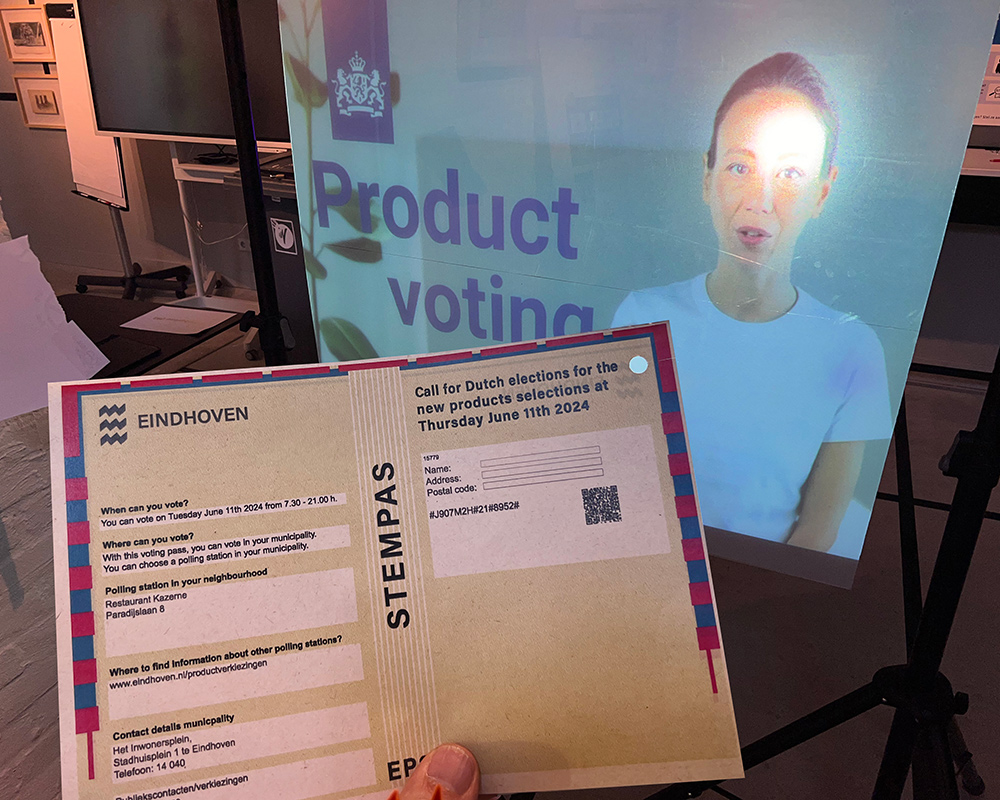
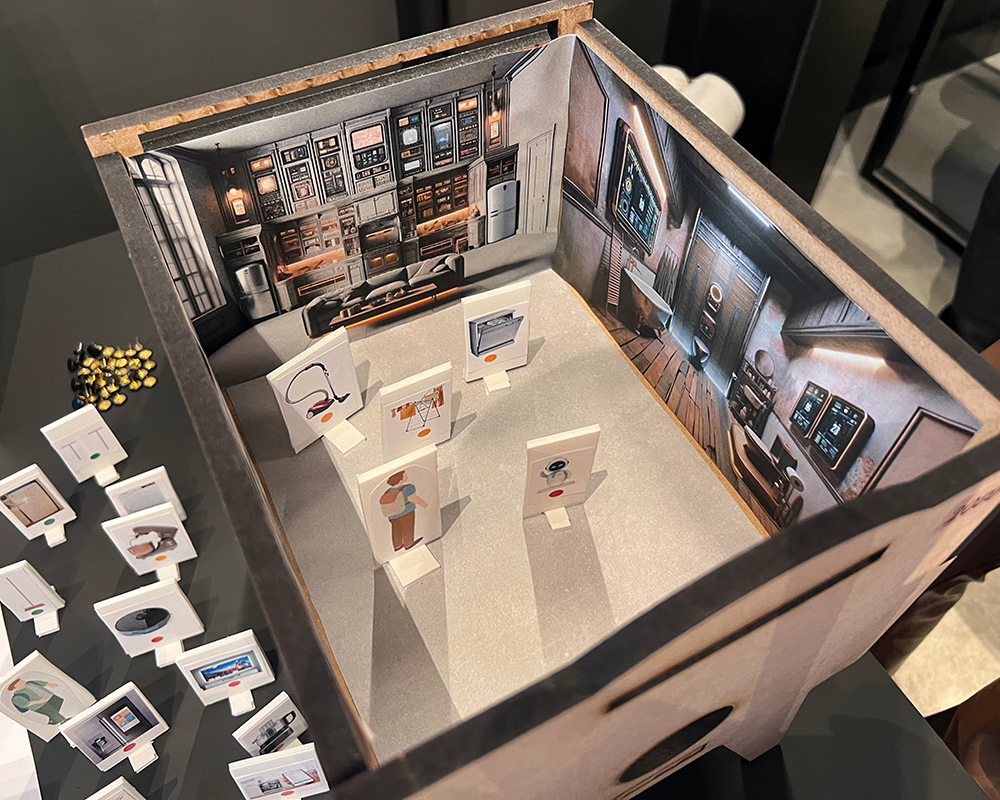
Imagining Future Everydays exhibition at Kazerne in Eindhoven. Including photos by Merel van Lieshout and Lenneke Kuijer
Imagining Future Everydays
It was my second (and it turned out, final) year leading the Researching the Future Everyday master’s course at TU Eindhoven, co-teaching with Lenneke Kuijer, Emilia Viaene, and Femke Coops (here’s our syllabus)—with support also from the IMAGINE project—and this year the course culminated with our exhibition, Imagining Future Everydays, at Kazerne in Eindhoven in June. 25 Industrial Design master’s students showed their seven projects—but these were designed not as “final” products, but as “deployed” research probes to explore visitors’ ideas and emotions around different imagined futures. Inspired by briefs around a “cabinet of rarities from 2050”, disputing automated decisions in future homes, and challenging consumerism by design, students developed projects ranging from a government-run voting system for which new products are permitted to be brought into production (complete with subversive activists), to the Relaxometer, a state-of-the-art machine that offers an hyper efficient relaxation experience, to a glimpse of a future where water shortages mean localised weather control is available to the wealthy—and also a thriving informal economy. You can see all the projects, and read the research paper the students wrote based on the insights gained from exhibition visitors, in the catalogue (PDF).
We had some great guest talks and workshops from Joycelyn Longdon, Josie Chambers, Eva Oosterlaken, and at the exhibition itself, Juli Sikorska, bringing a variety of perspectives on thinking about futures, the environment, and design research. In the exhibition we were also joined by Peng-Kai Hung, showing his work exploring the design possibilities (and concerns) of using generative AI for playful urban interaction, and Vere Vreeswijk showing her Becoming Climate Friendly journal (which received 2nd place in the Social Design Talent award from the municipality of Eindhoven).
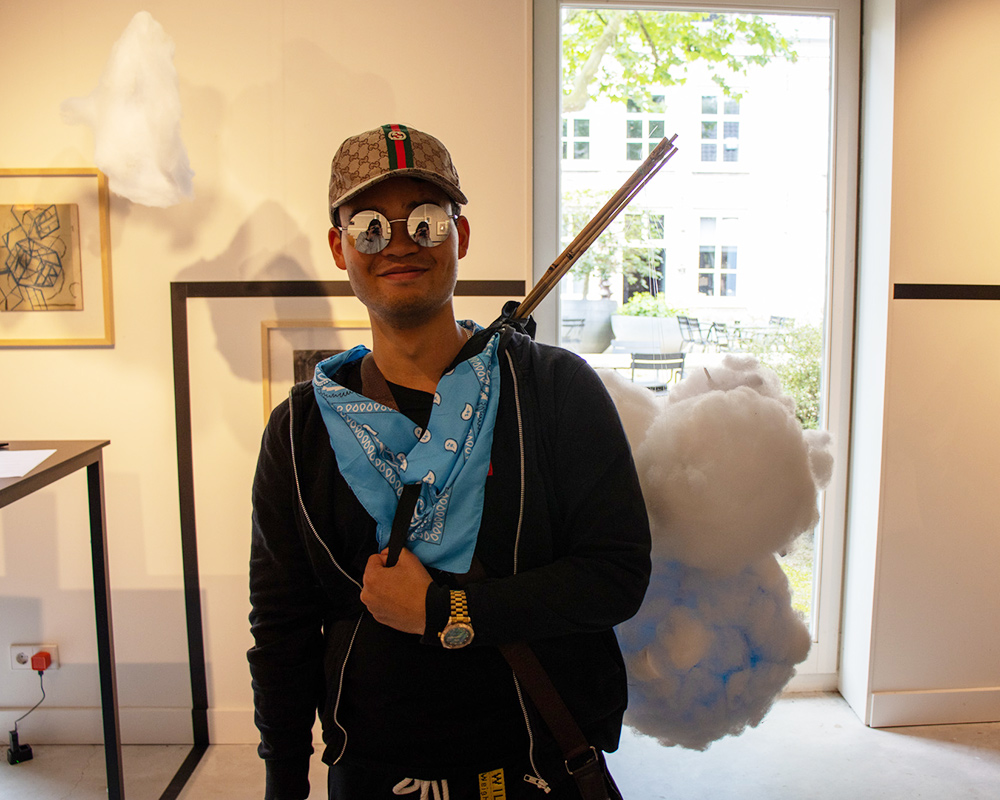
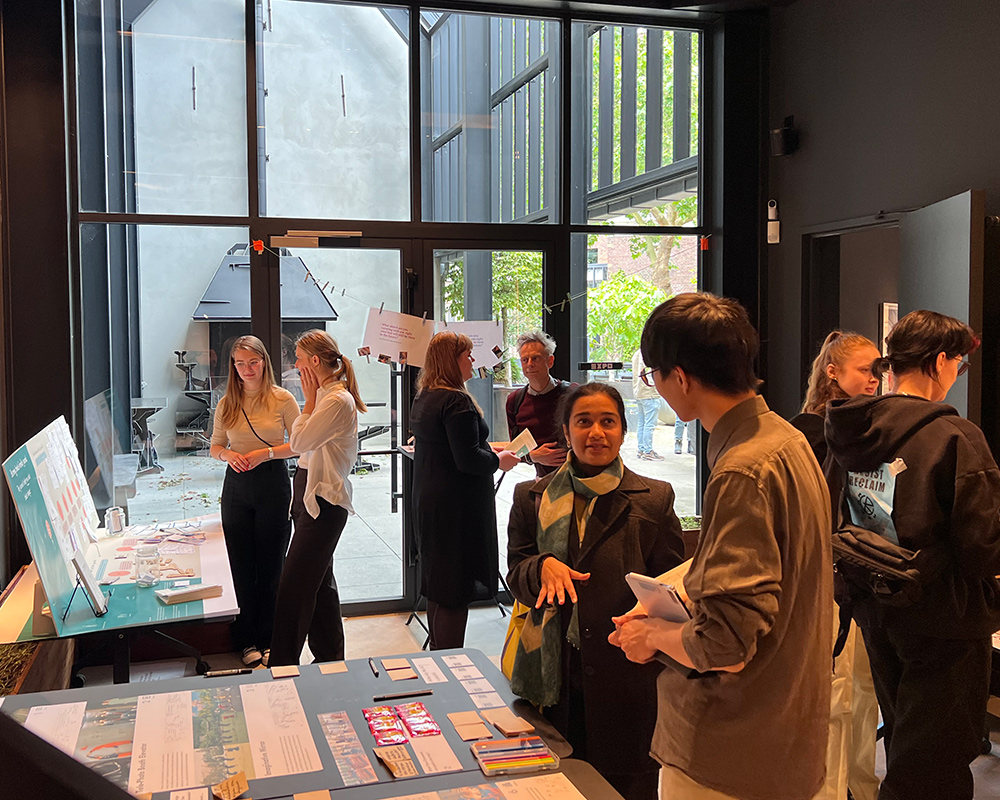
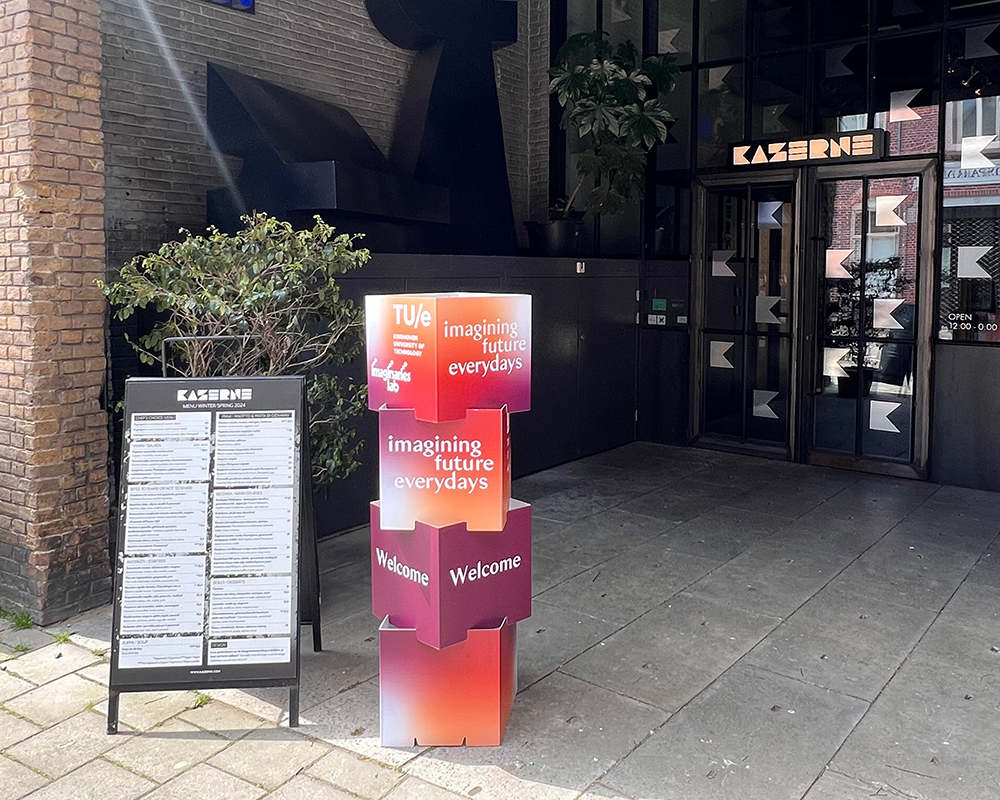
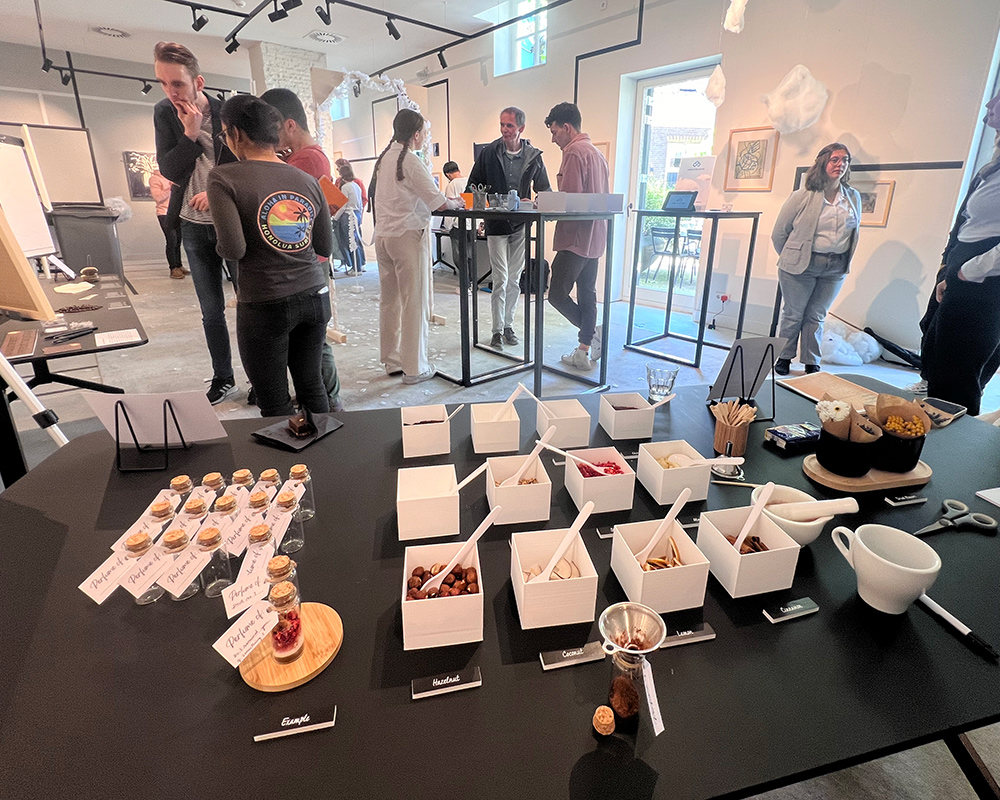
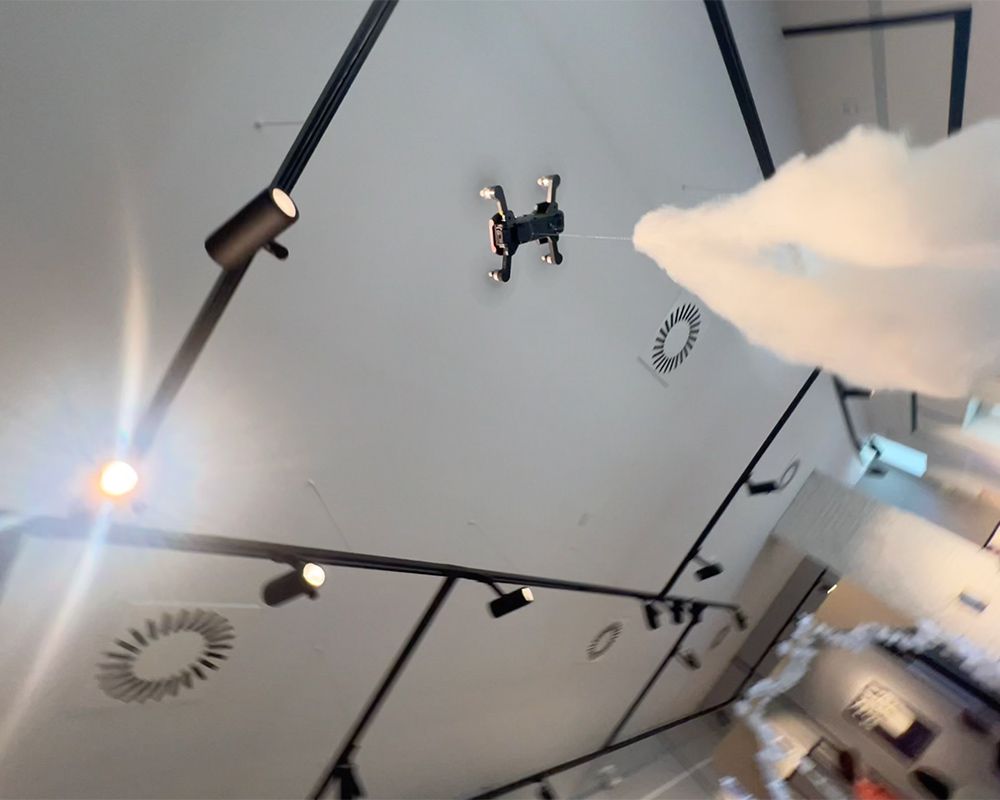
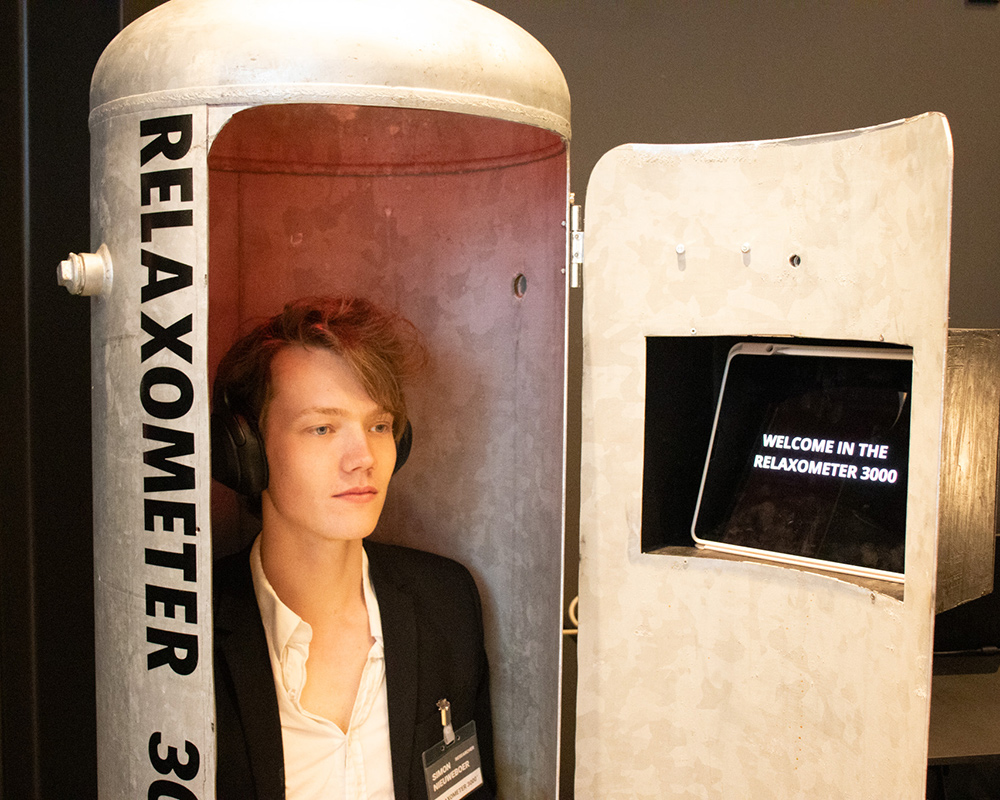
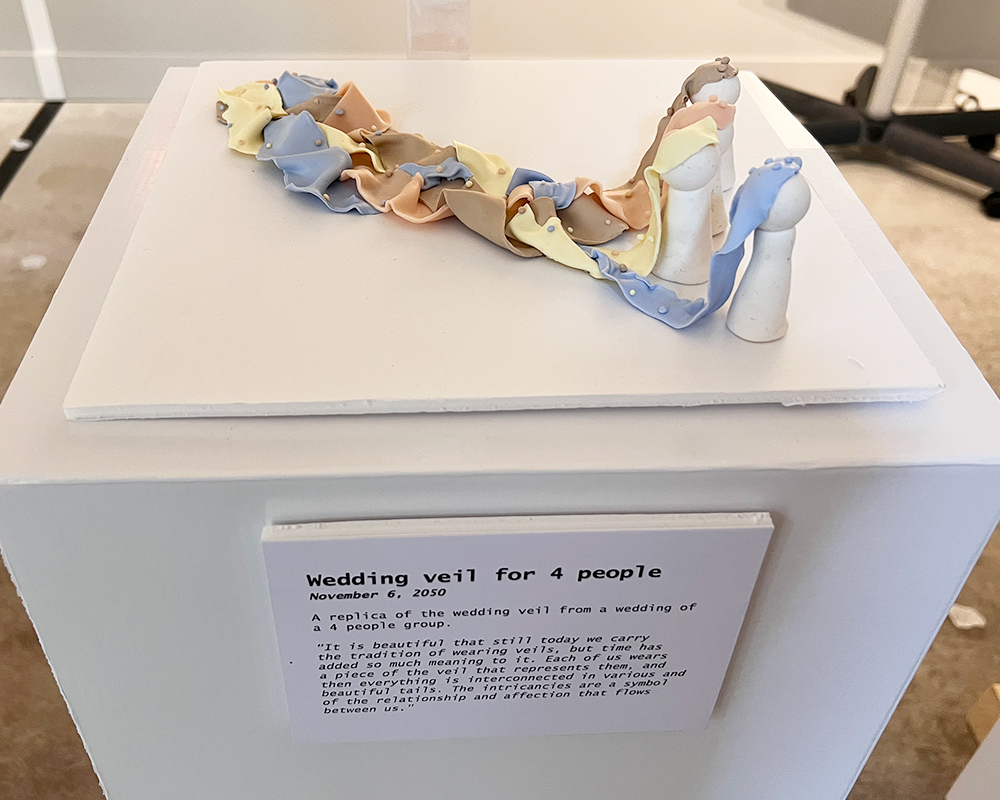
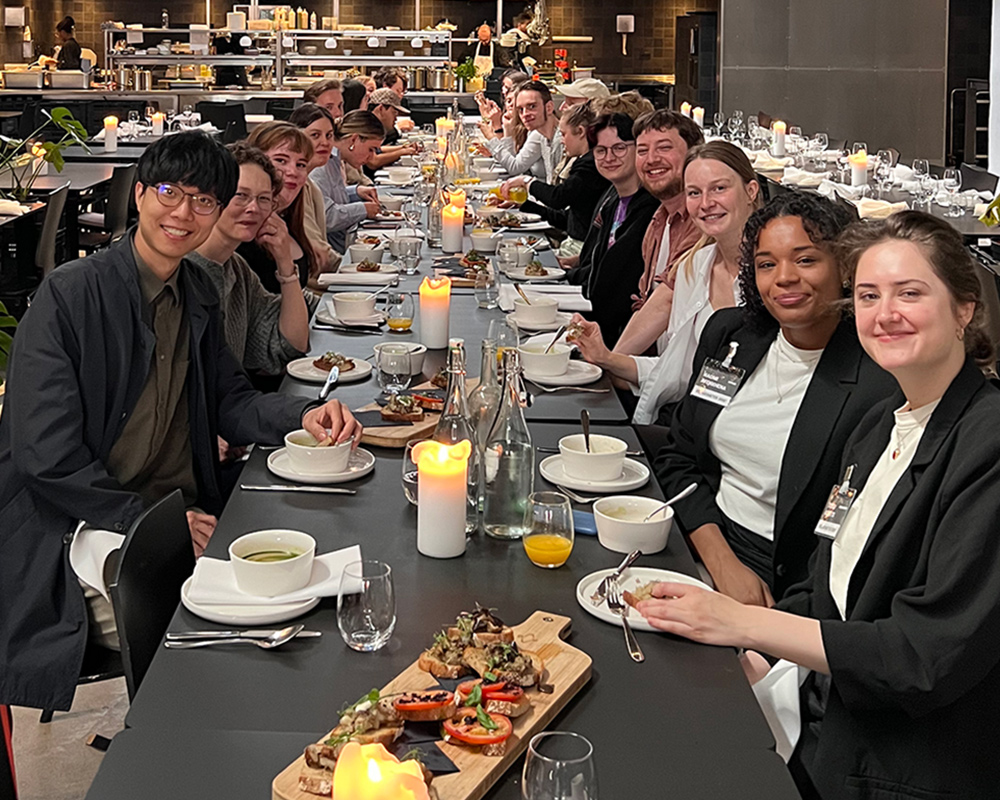
Imagining Future Everydays exhibition at Kazerne in Eindhoven. Including photos by Merel van Lieshout and Lenneke Kuijer
A selection of our Researching the Future Everyday projects and other TU/e student projects responding to briefs relating to IMAGINE from the last couple of years were also included in The Futures We Imagine at Litteraturhuset in Oslo from 10–15 December.
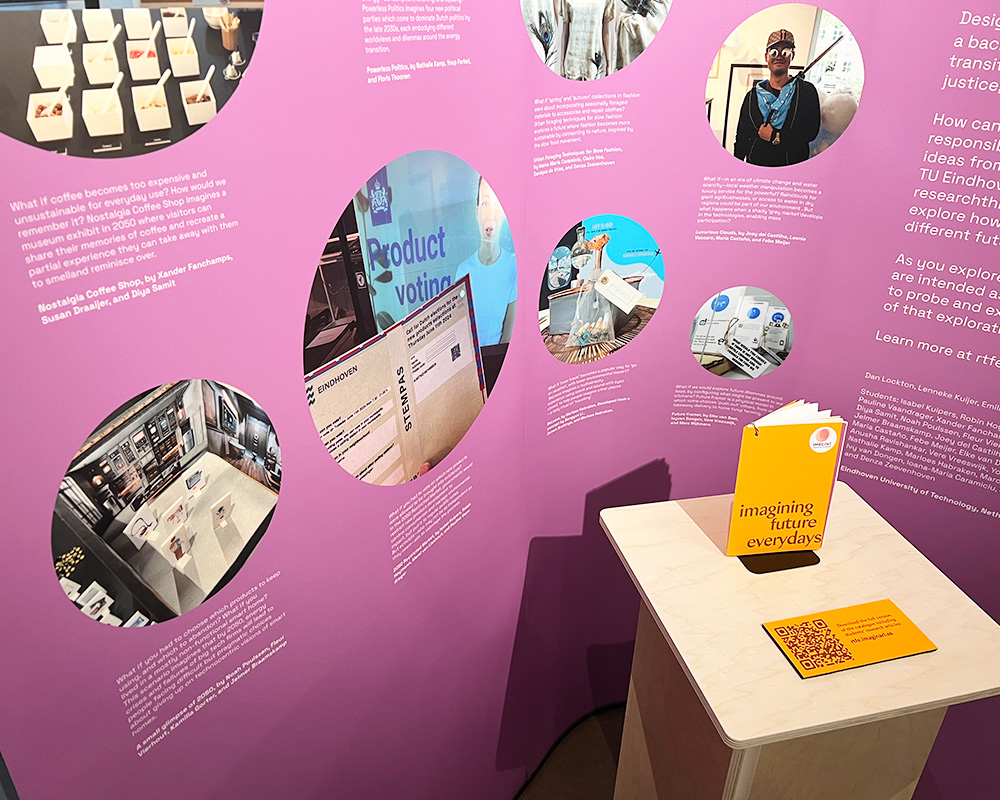
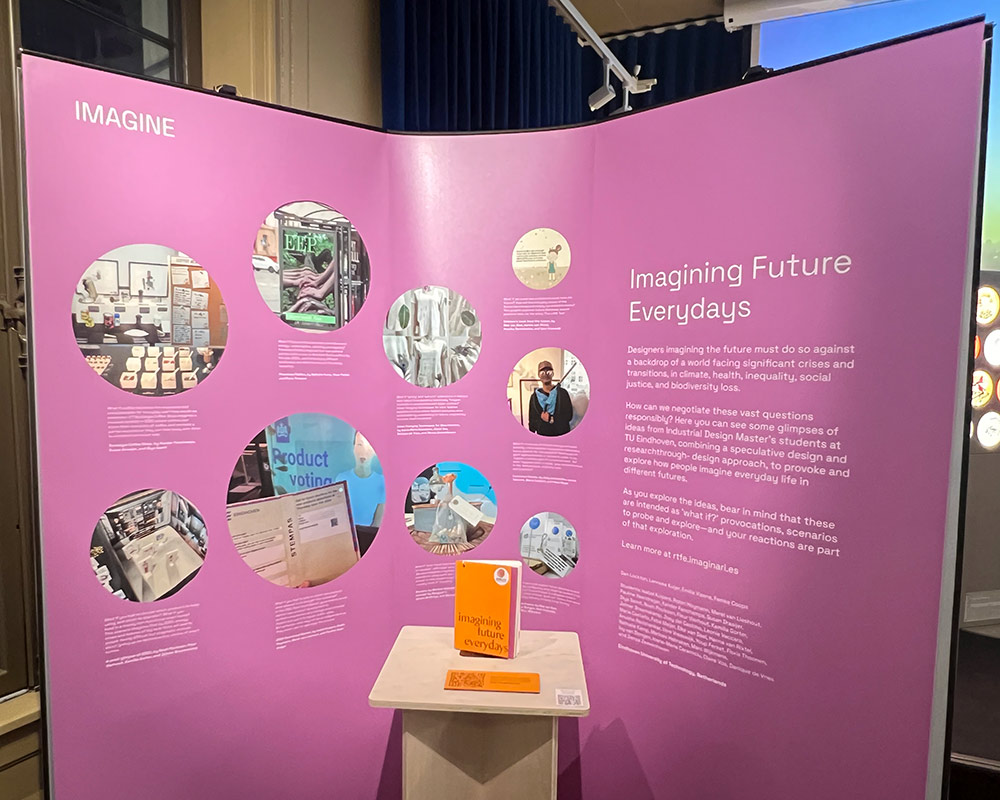
TU Eindhoven student projects on display at Litteraturhuset, Oslo
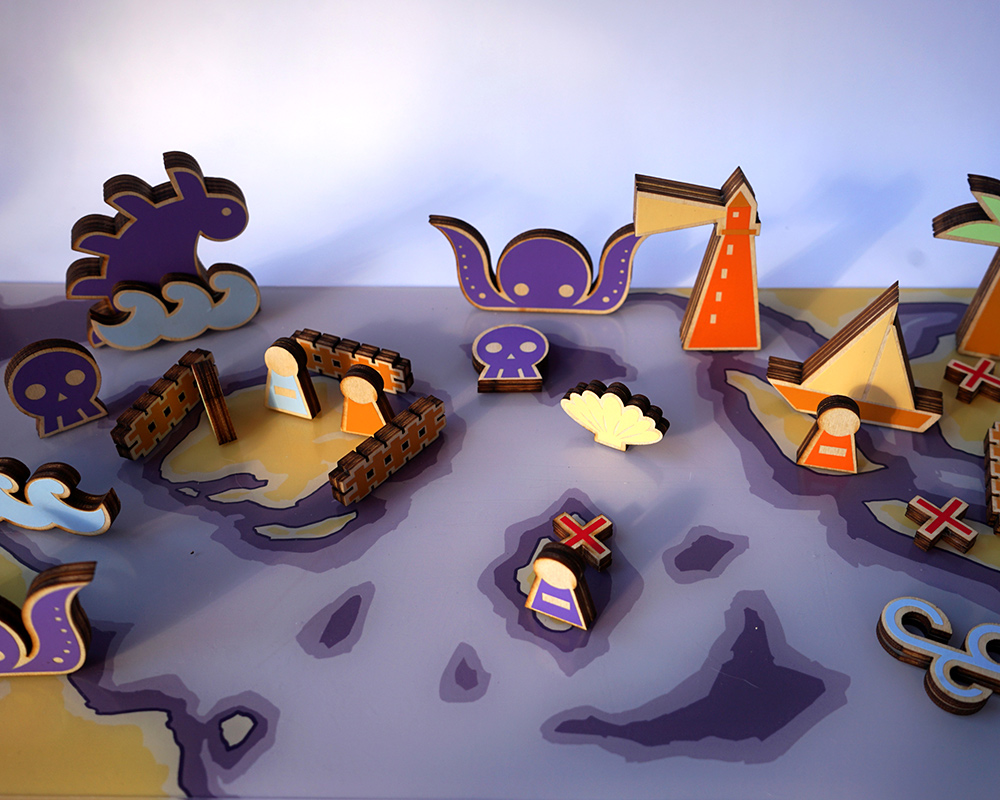
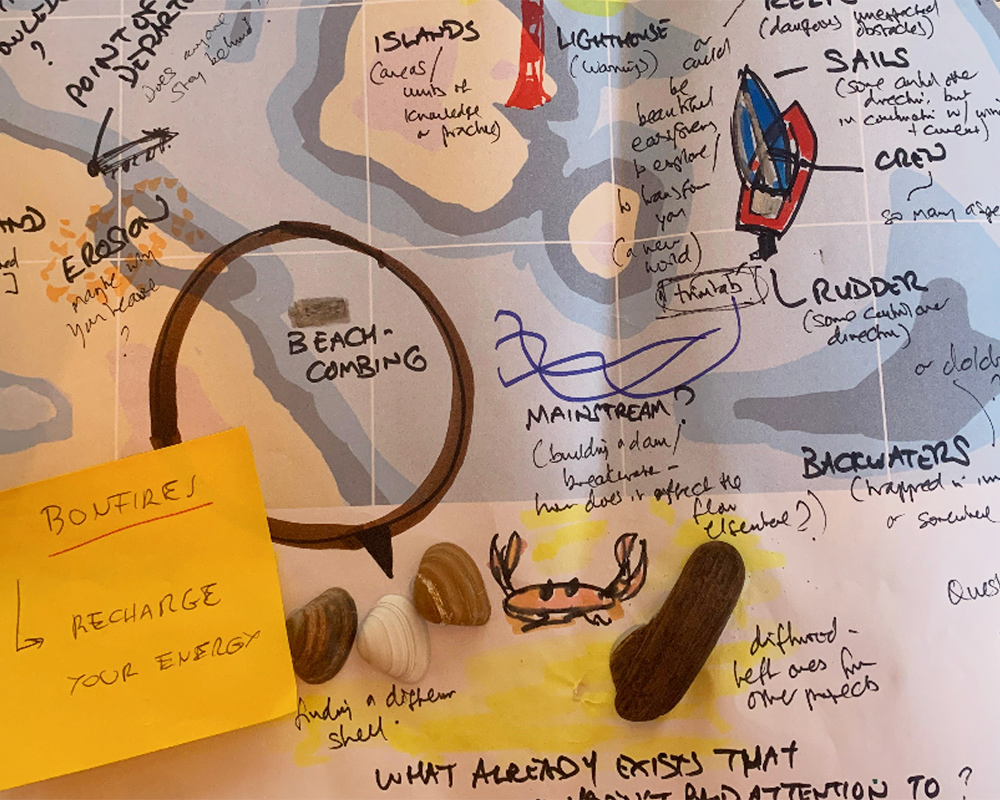
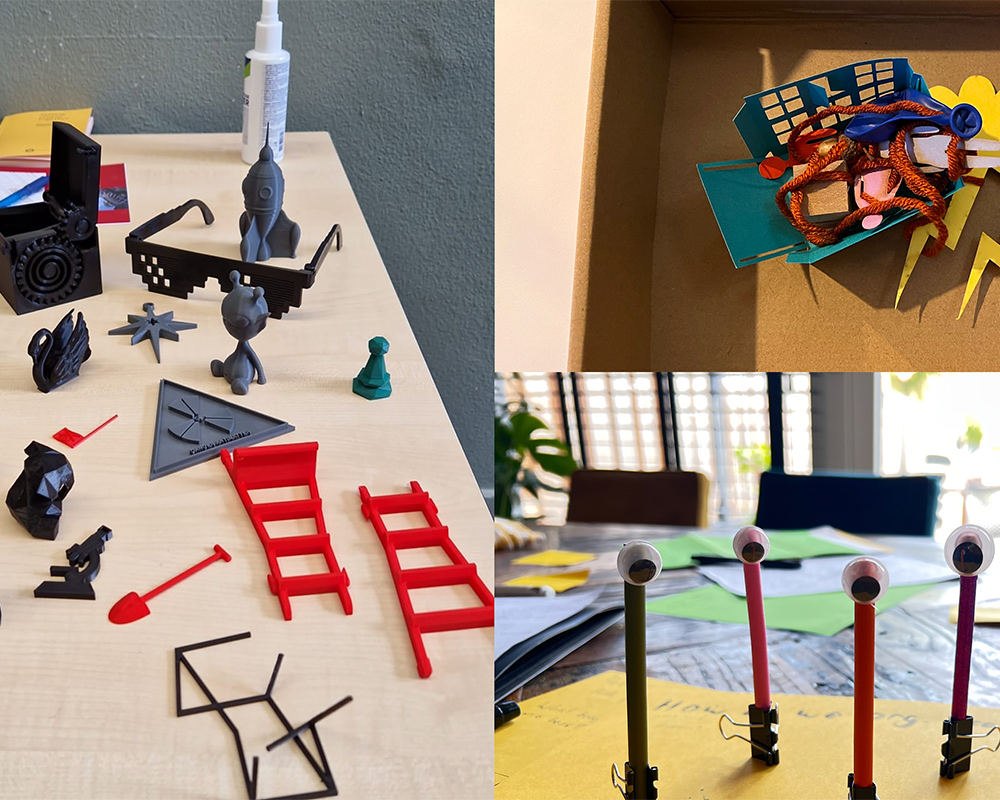
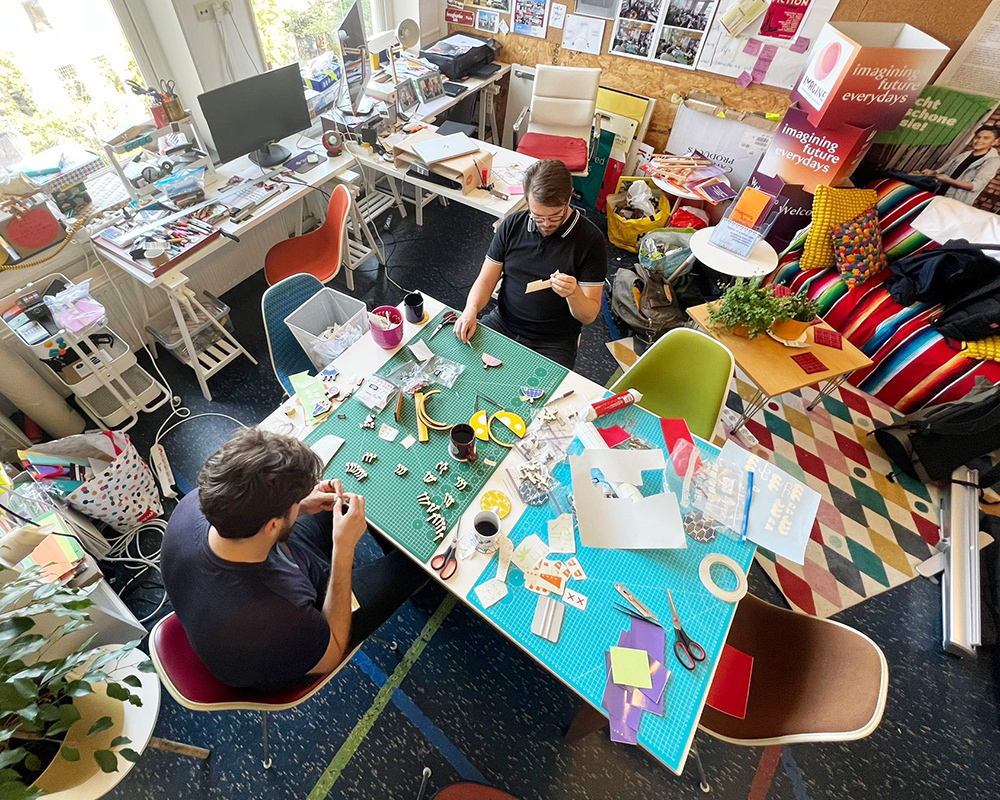
The Unbox prototype (photo by Kuangyi Xing) and parts of the design process
Unbox: Metaphorical spaces for unusual collaborations
I’ve been exploring (with others) metaphors in various ways for a few years now, from generating new metaphors, to their places within systems, to their relationship with Gregory Bateson’s syllogism in grass, to making them tangible through landscapes or more complex patterns of both static and dynamic storytelling. One area where the tangibility angle has been especially interesting is in exploring and enabling new ways of imagining collaborations and projects themselves. We often use metaphors when talking about collaboration—they can be a way to bridge disciplinary boundaries, assumptions, and worldviews, grow the capacity for inter- and transdisciplinarity, and (hopefully) ensure people from different backgrounds are ‘on the same page’. As my colleague Jonas Torrens points out, the word project itself hides a metaphor: it derives from the Latin proicere, to throw forward. It is common to use metaphors such as ‘milestones’, ‘building blocks’, ‘goals’, ‘horizons’, ‘work packages’, and ‘missions’ in projects, just as we use ‘fields’ and ‘areas’ to discuss disciplines or types of work. Metaphors have lots of advantages as a form of shared vocabulary—but they are a form of model, and the models used can trap us in particular ways of thinking and working, reproducing assumptions and structures.
With Jonas Torrens, Jillian Student, Merijn Bruijnes, Federico Andreotti, Kuangyi Xing, Niva van der Geer, and now joined by Niki Puskás and Gabriele Ferri, since 2023 I have been part of Unbox, funded by the Centre for Unusual Collaborations, in which we are exploring how physicalising metaphorical spaces (caves, islands, outer space, and so on) can be a way for groups or teams to imagine different ways of working together.
In 2024, Unbox reached a stage of maturity where—with a physical ‘boardgame’ kit designed by Kuangyi Xing—we were able to run some (very enjoyable) playtest workshops, at RSD 13: Rivers of Conversations (the Systemic Design Association conference) in Oslo, and ITD 24: Inter- and Transdisciplinarity Beyond Buzzwords, the international transdisciplinarity conference in Utrecht, as well as at a Centre for Unusual Collaborations event. Helma van Luttikhuizen interviewed Federico Andreotti and me for a short piece about our ITD experience. Looking forward to further developments with Unbox in 2025—we were recently awarded a full Unusual Collaborations grant for the year ahead.
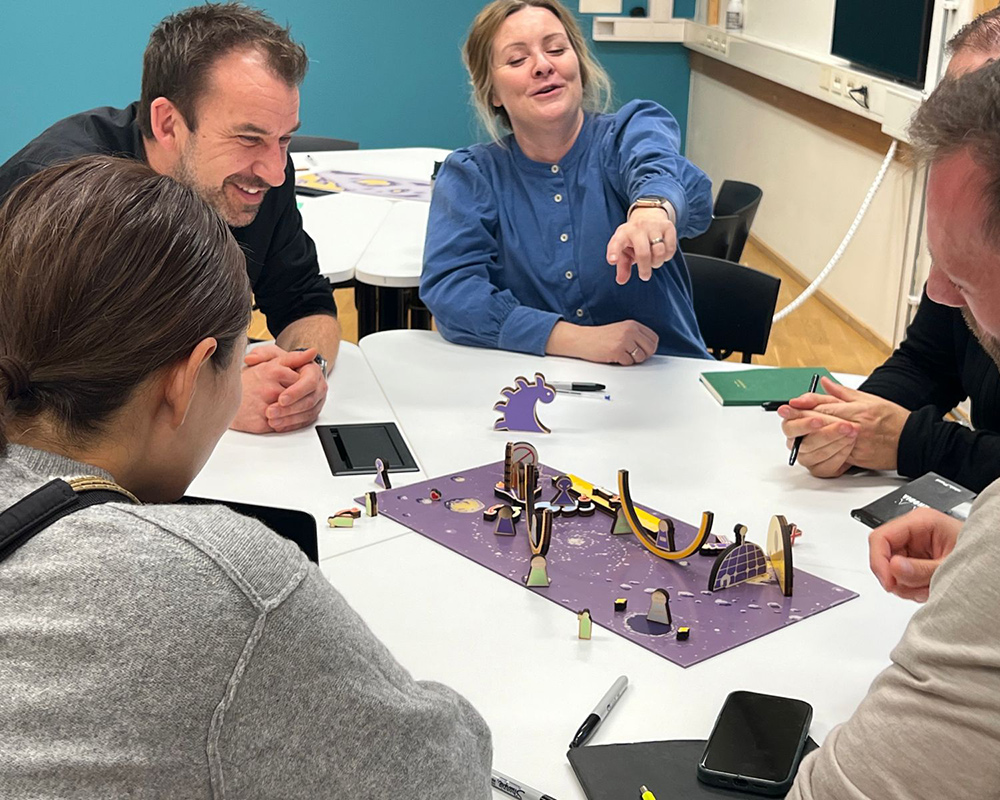
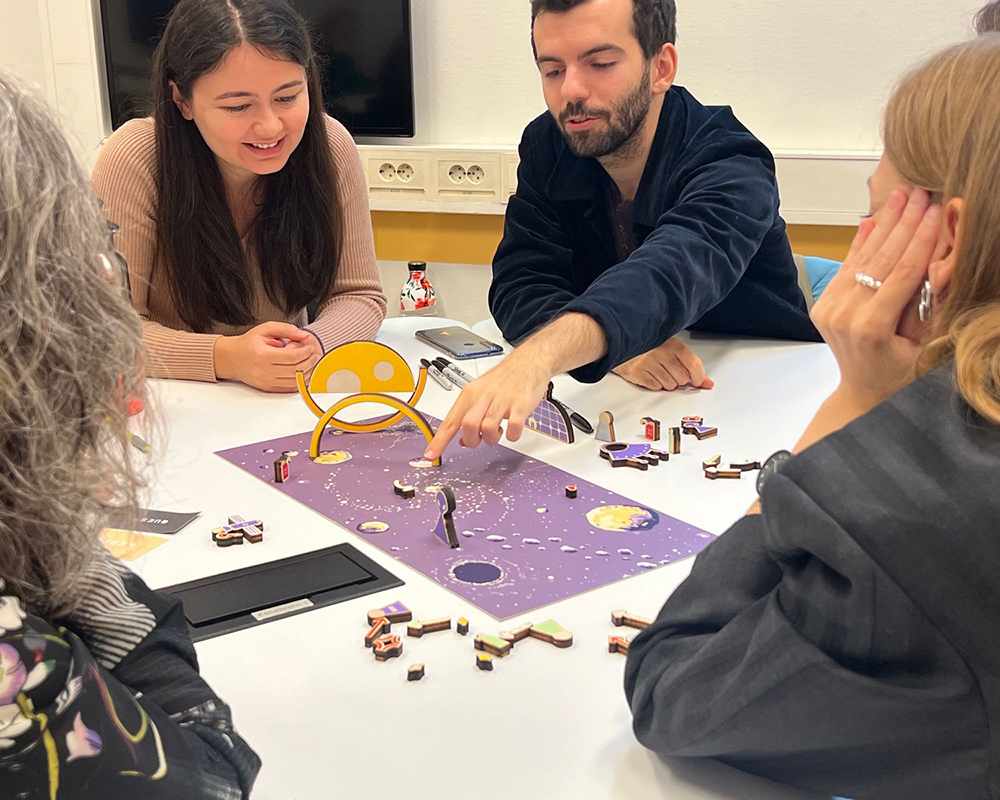
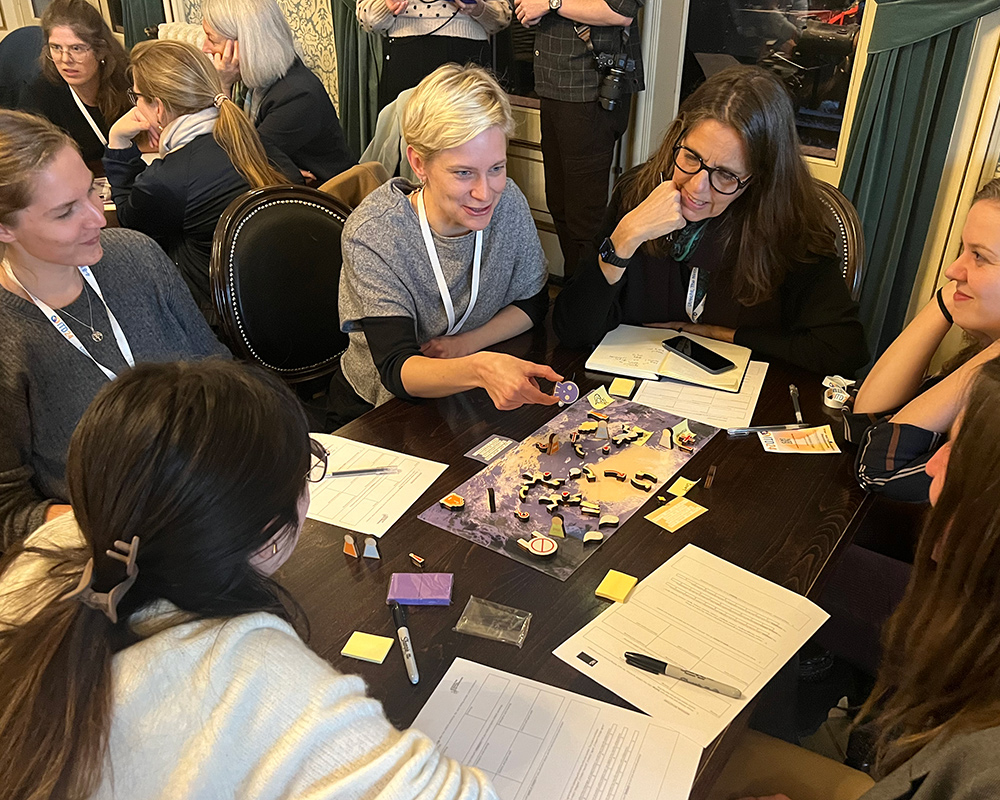
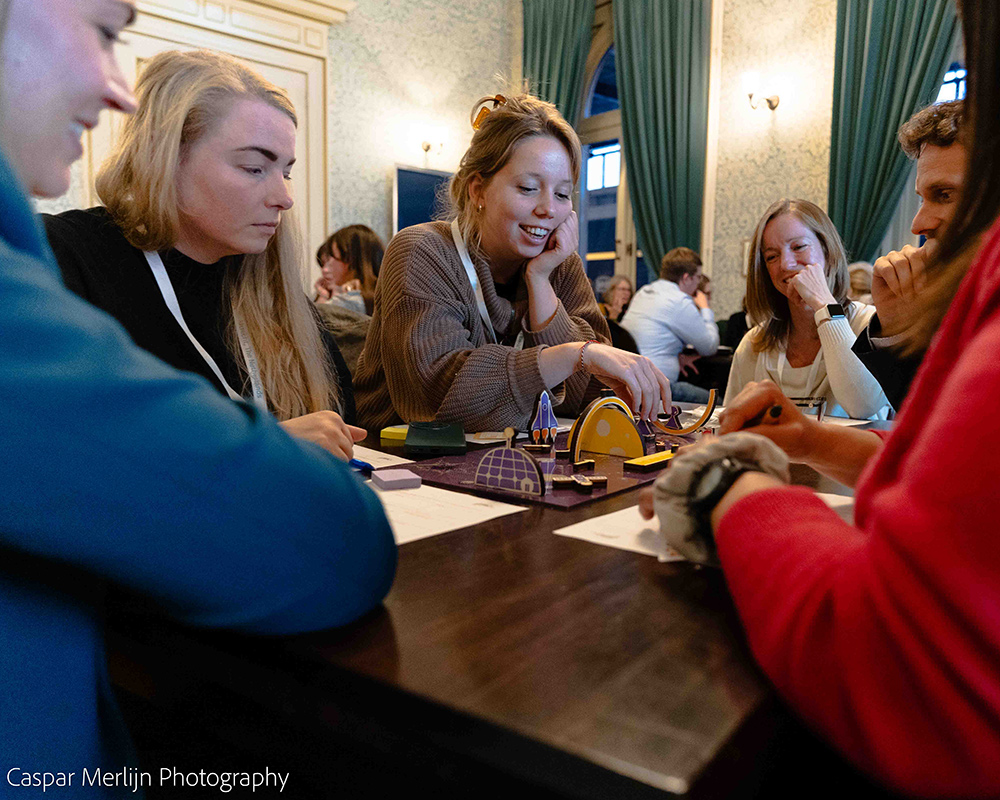
Unbox workshops at RSD 13, Oslo, and ITD 24, Utrecht (including photo by Caspar Merlijn Photography)
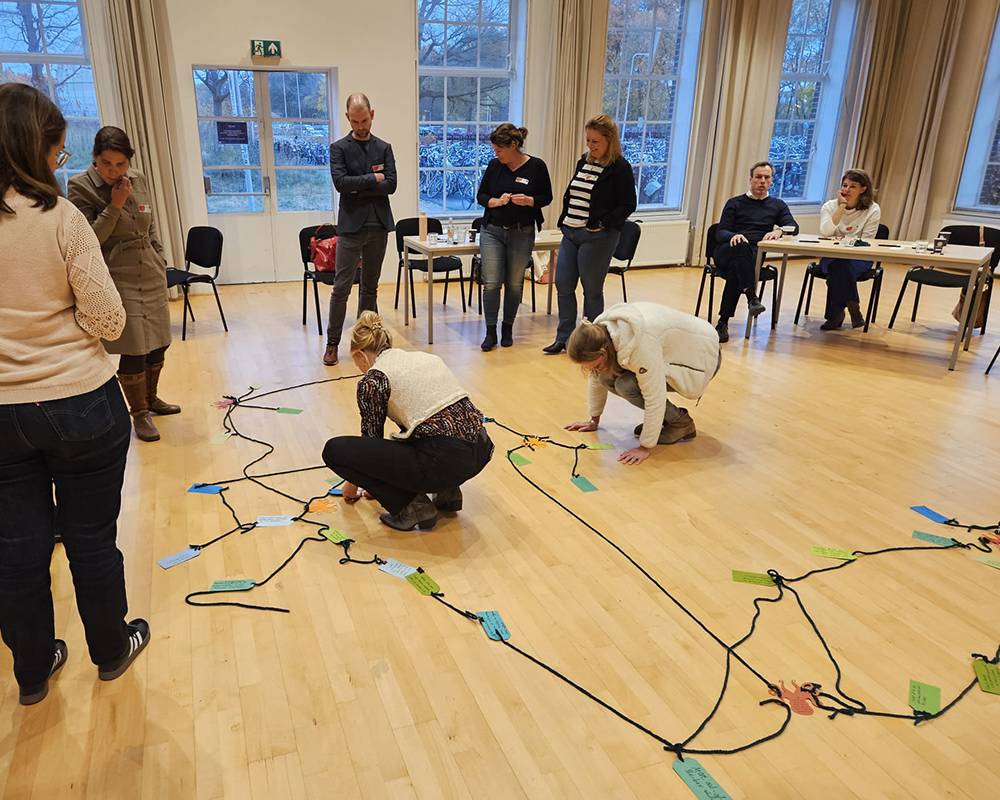
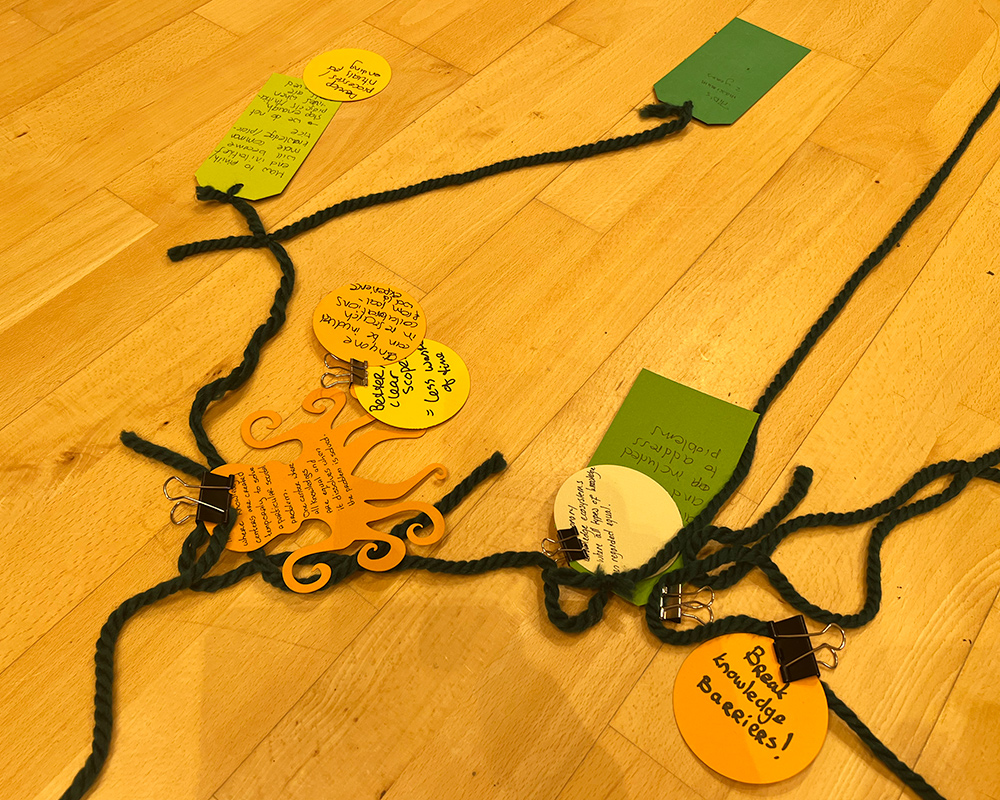
Future Webs workshop at EWUU Alliance Autumn Meeting in Ede
Playing with the Trouble
I won’t say too much about Playing with the Trouble project for now, since we are in our final phase (ending March 2025) and will have a lot more to share very soon. But, with a great team—Josie Chambers, Jet Vervoort, Joost Vervoort, Maikel Waardenburg, Raimon Ripoll Bosch, Jessica Duncan, Joyce Browne, and with design and assistance from Danvy Vu, Saskia Colombant, Clara Schuster, Kyle Thompson, Sable Knight, Lotte de Lint, and Carien Moossdorff—over the last few years, we have developed “a travelling library for transformative play”, a collection of brand-new and iterated/developed activities and games which support groups who are developing new kinds of interdisciplinary collaborations, through approaches such as surfacing worldviews, challenging power, and collectively re-imagining. In 2024, I have been involved in developing a few activities for the library, including Future Webs (with Jet Vervoort), a kind of combination of futures wheels with something like Amy Twigger-Holroyd’s Fashion Fictions worlds in a physical workshop format (most recently run for the EWUU Alliance’s Autumn Meeting in Ede, Netherlands). The library (physical and digital) will also include versions of Sunsets & Sunrises (with Femke Coops), along with an amazing array of games created by team members at Utrecht University, University Medical Centre Utrecht, and Wageningen University & Research. Special thanks to the Centre for Unusual Collaborations for funding us from 2021–25, and to Danvy Vu for being our designer for the last year of the project.
Looking ahead
I’m about to embark on an experiment in cross-border living (Utrecht) and working (Norwich) which is now much more complicated than it would have been before the British government took away so many of our rights. I am hopeful that being a “citizen of nowhere” will actually enable new kinds of perspectives, links, collaborations, and frankly, knowledge exchange. We shall see. But I’m very excited indeed for what we might be able to imagine, and build, and what sunrises are ahead.
Good luck for 2025, and thank you to everyone for your support this year.
*The first WordPress post on the blog was in November 2005, but I’d had the site for a few months as a kind of manual blog, adding short update notes to an HTML page, as far as I can remember — it was all about my Master’s project. It was a different world in so many ways.
